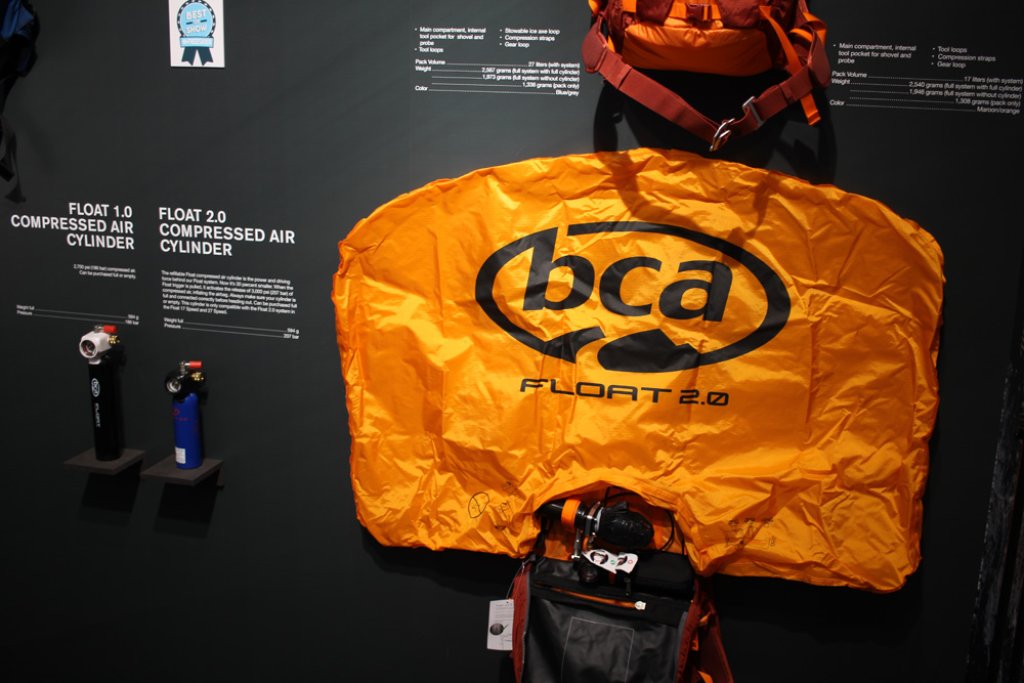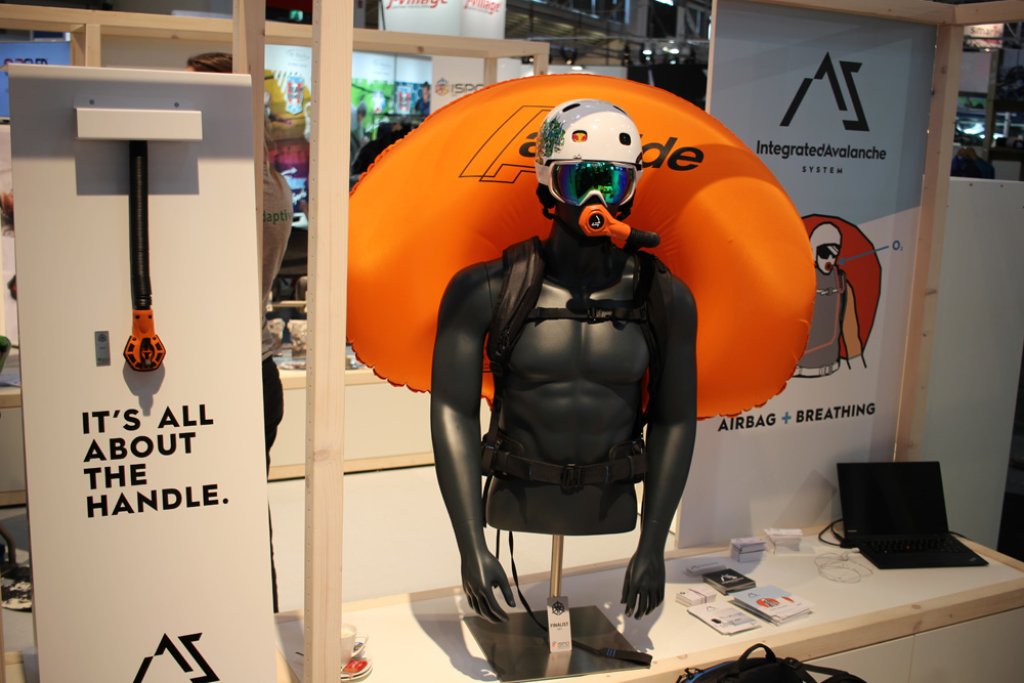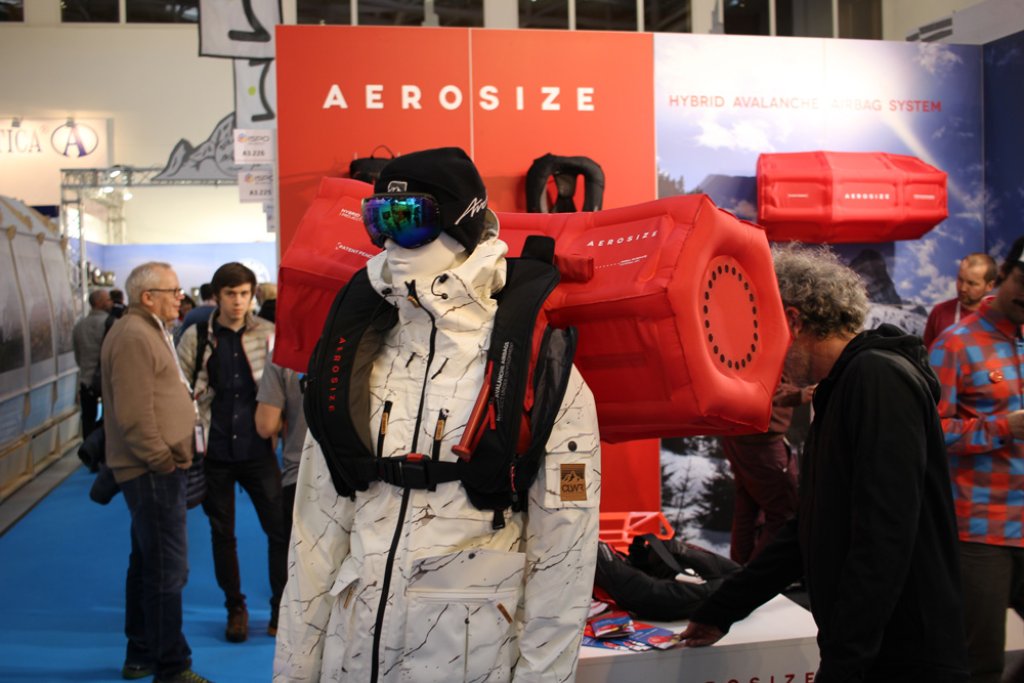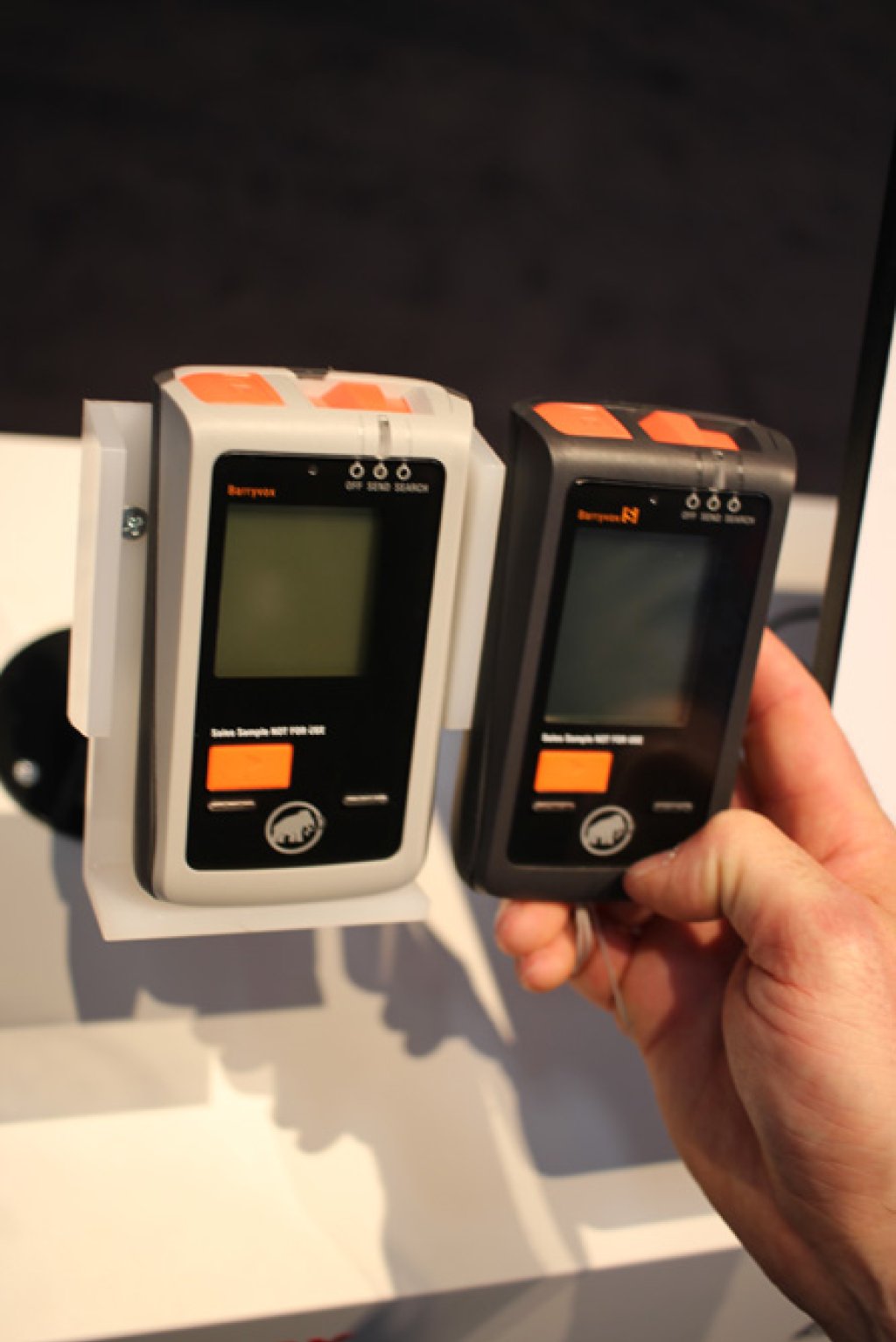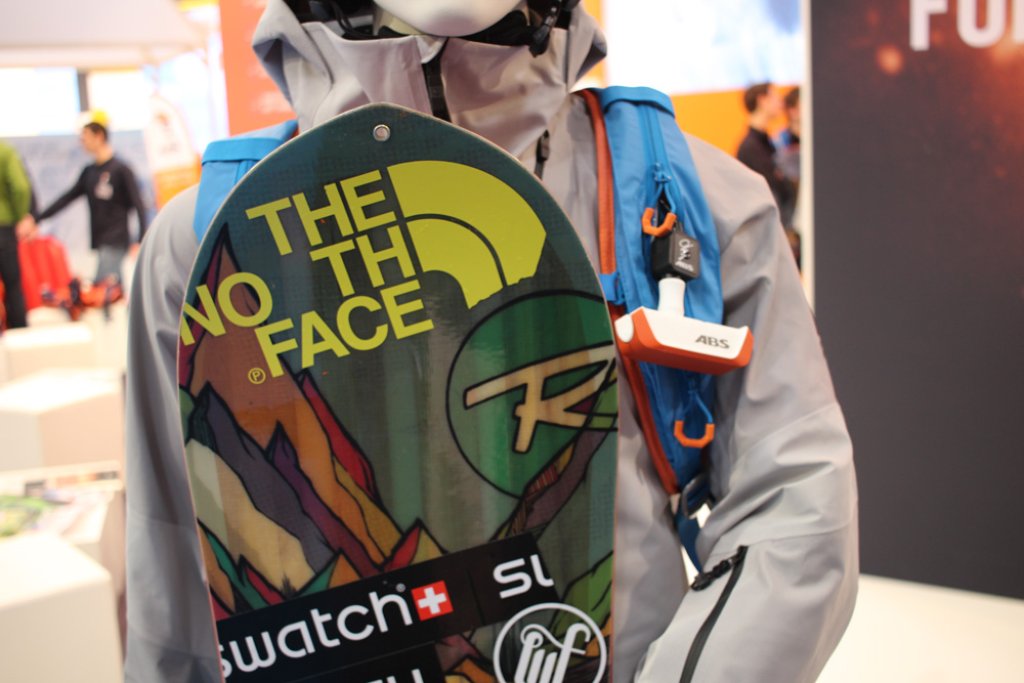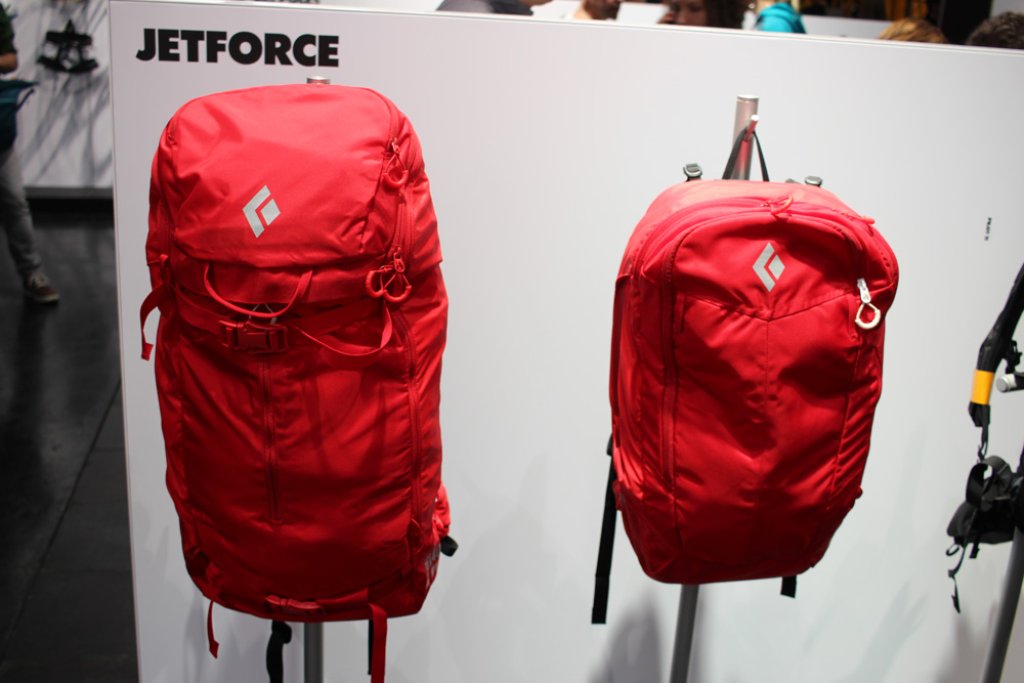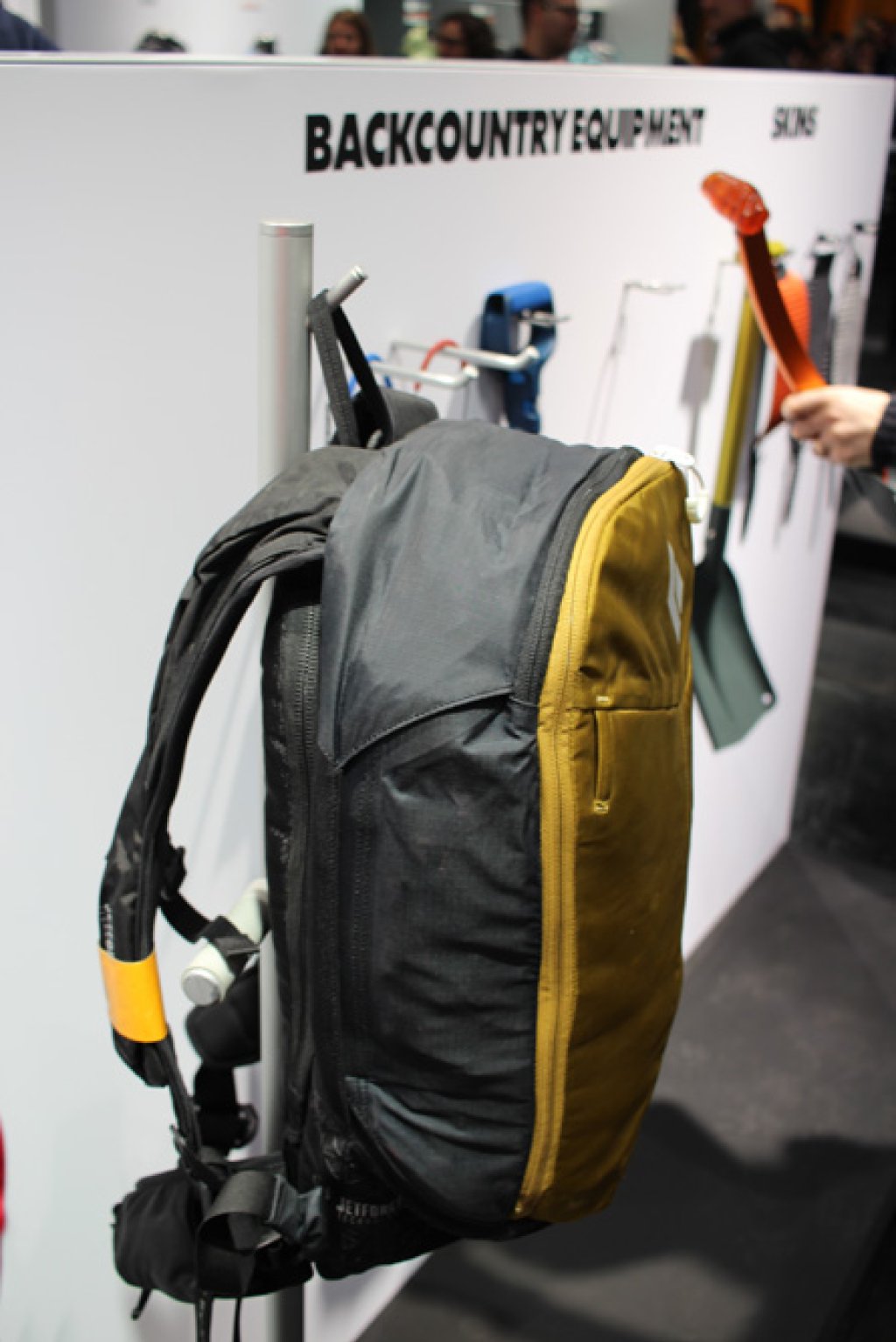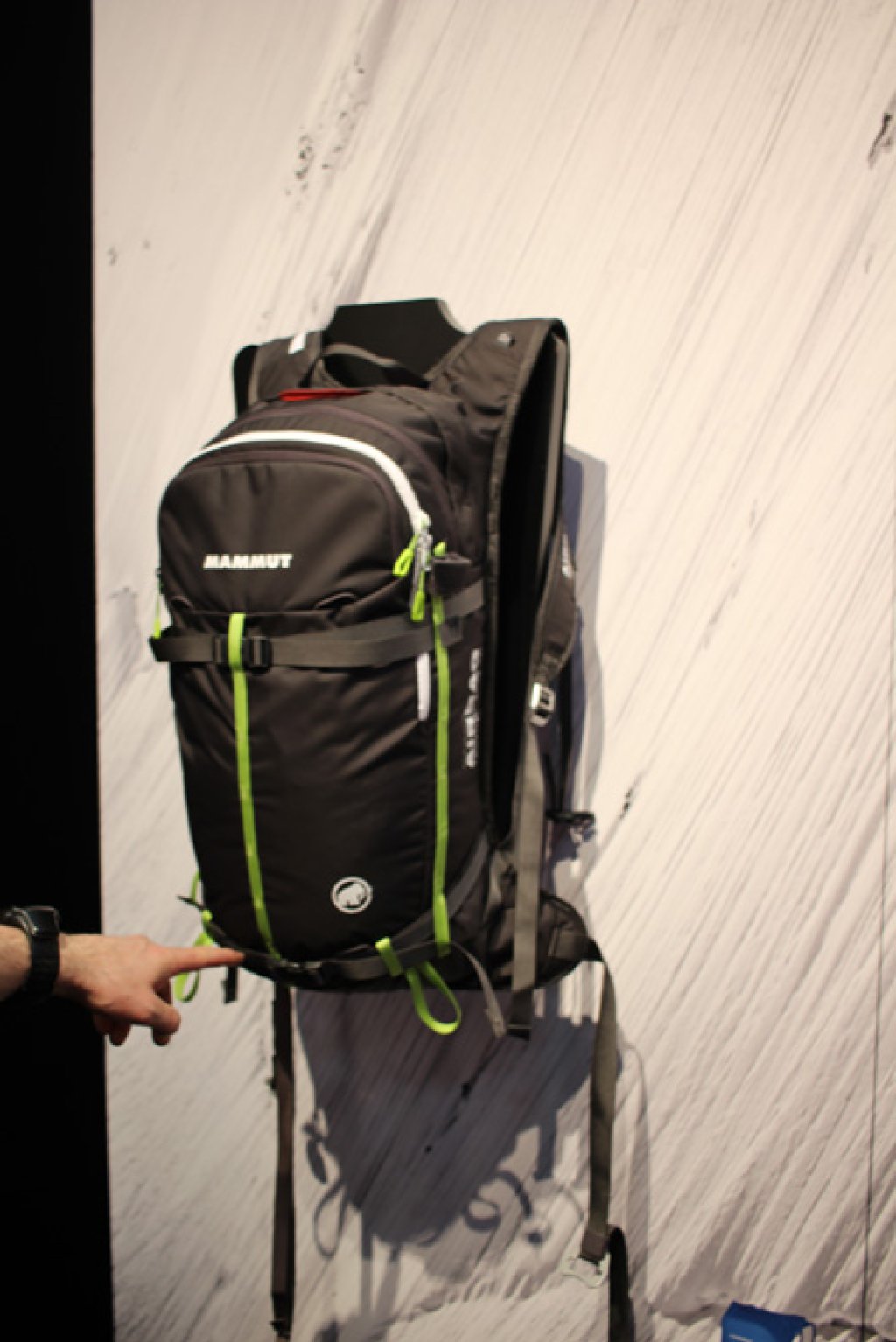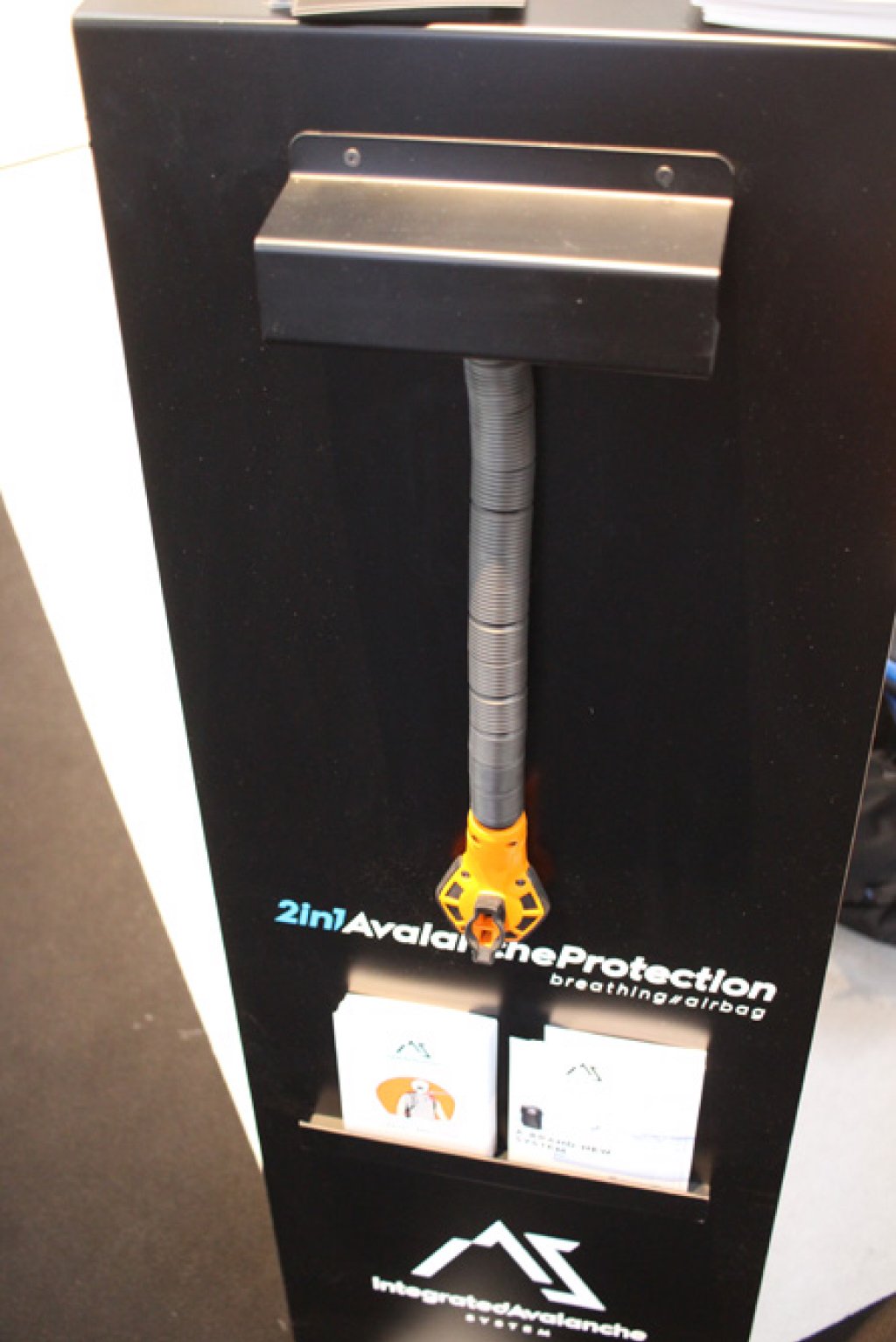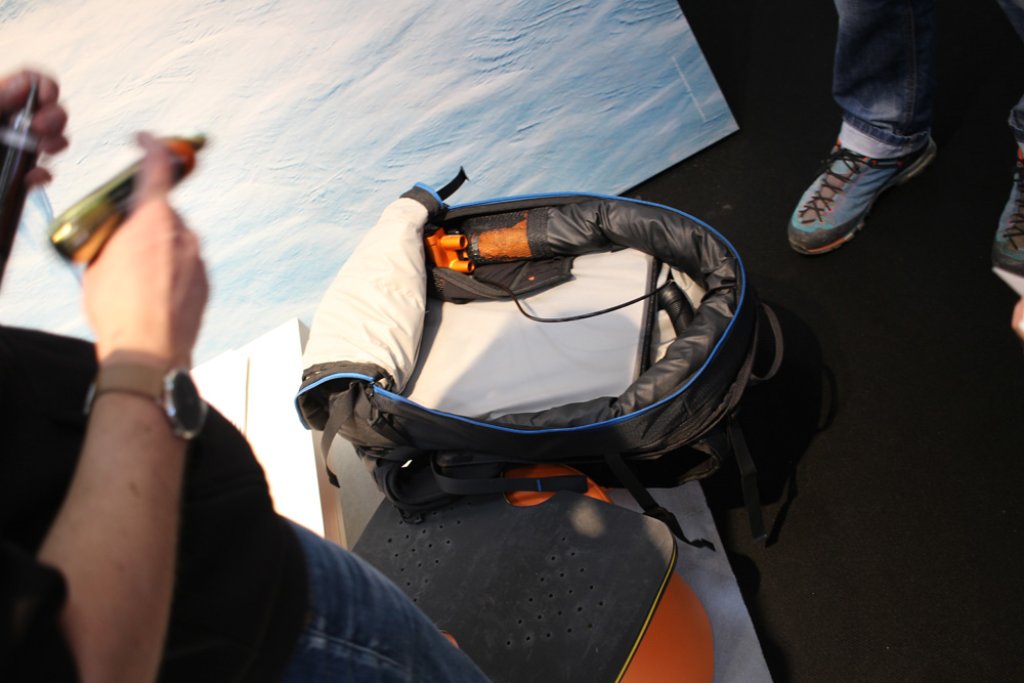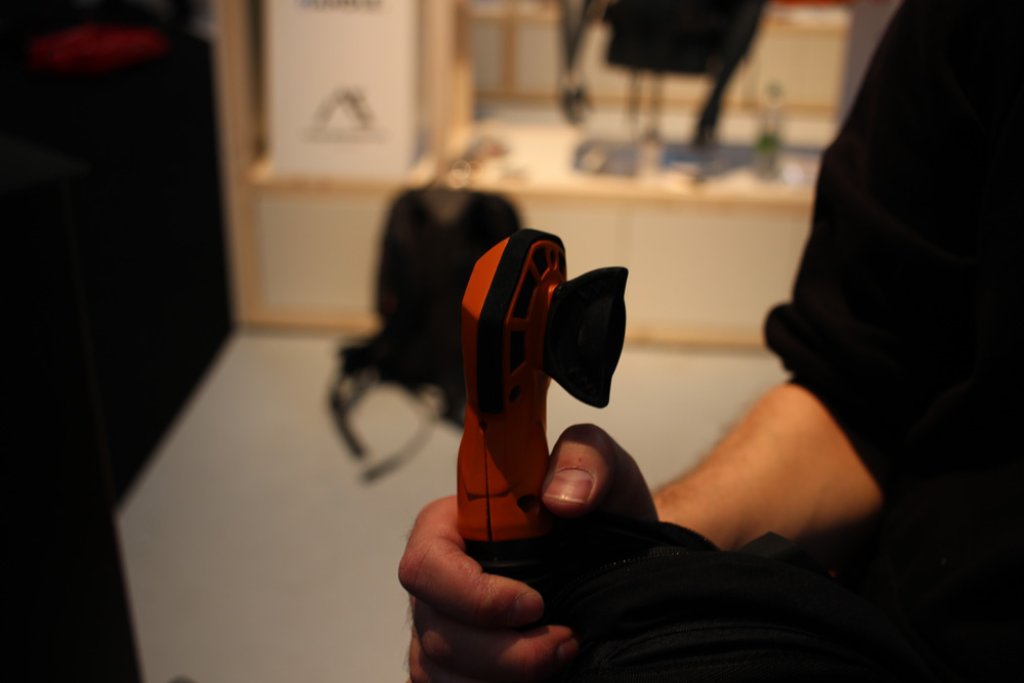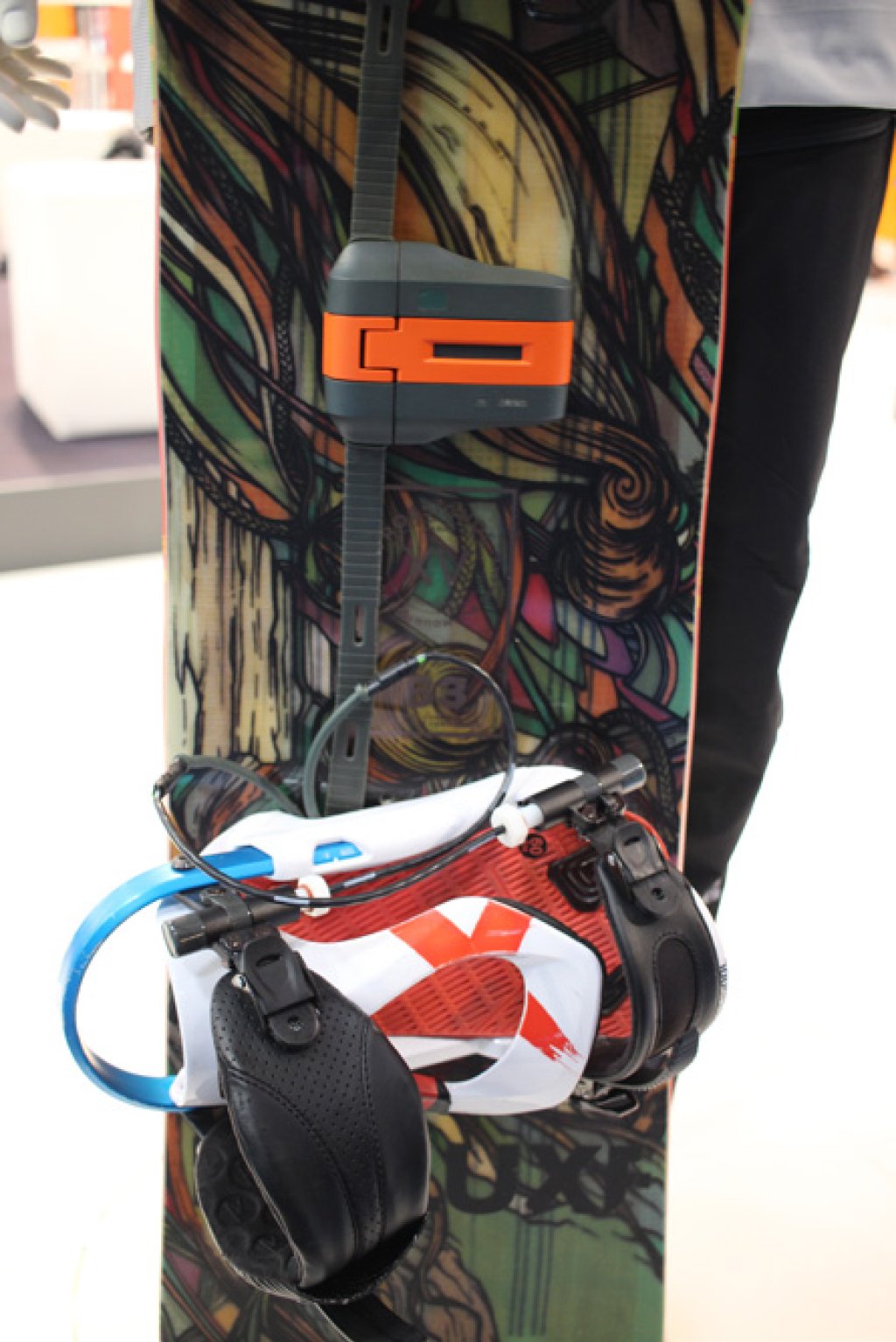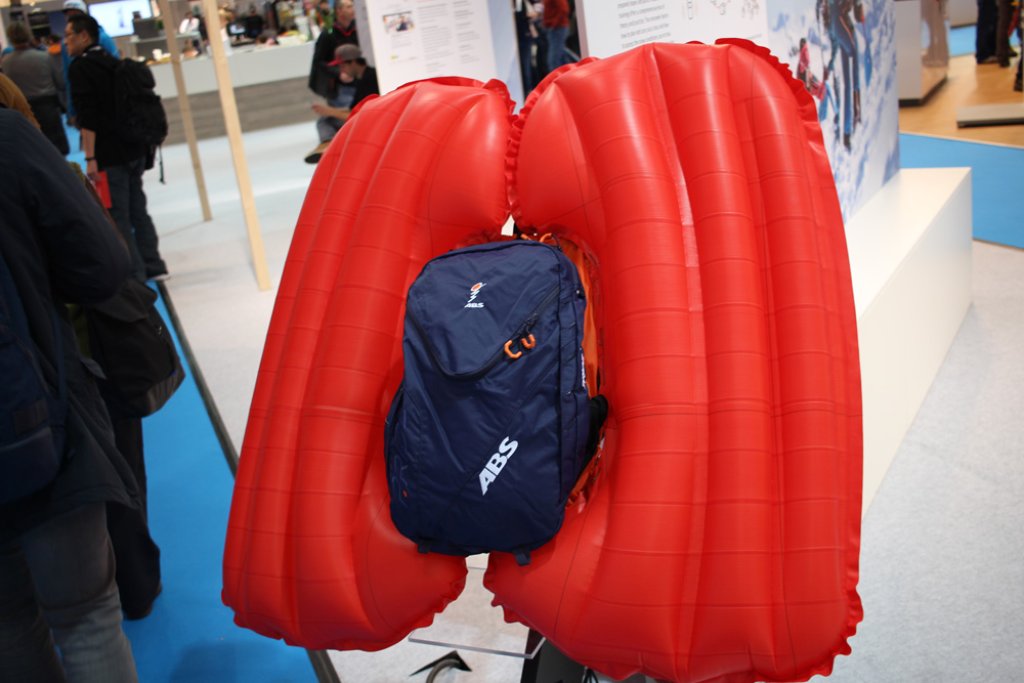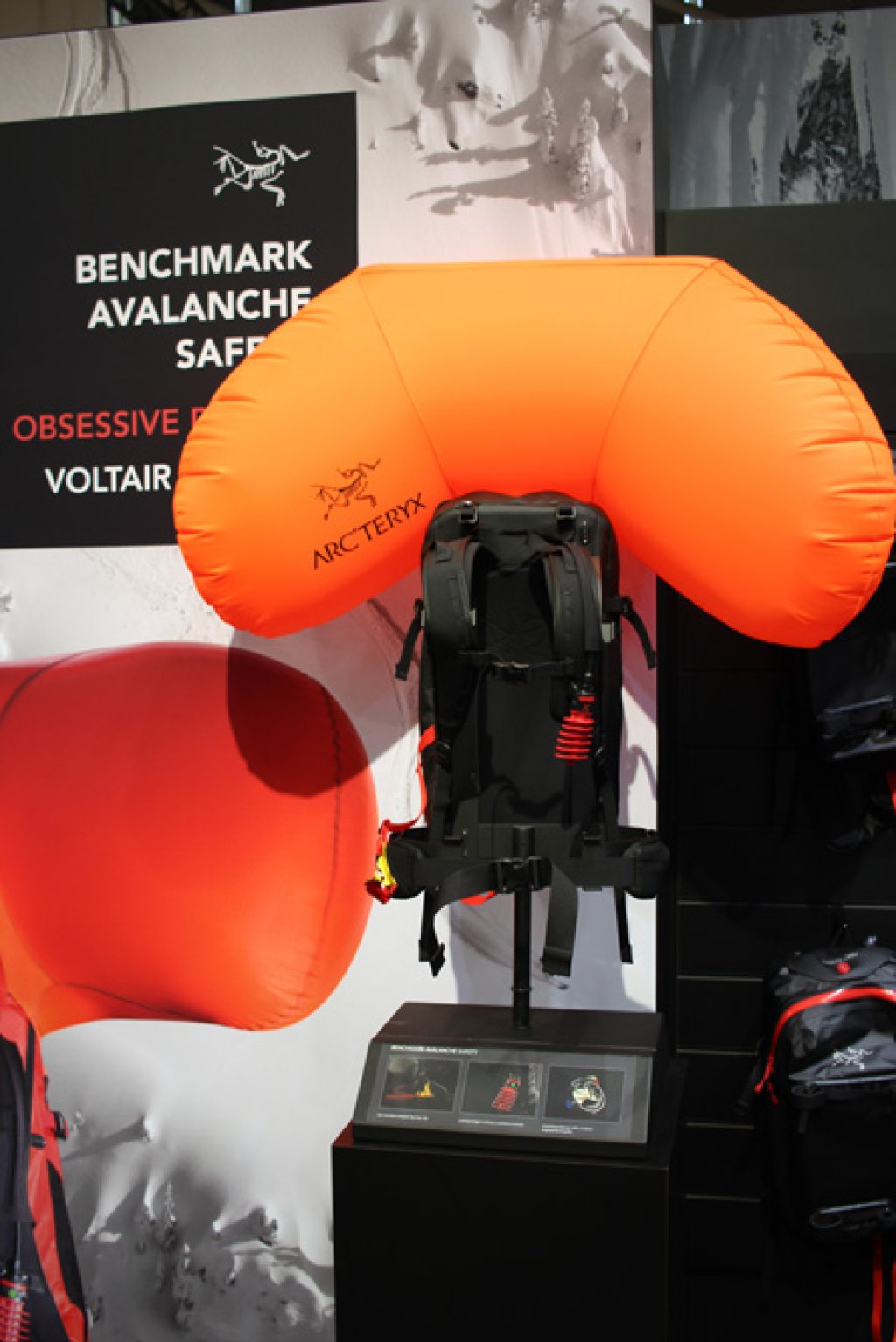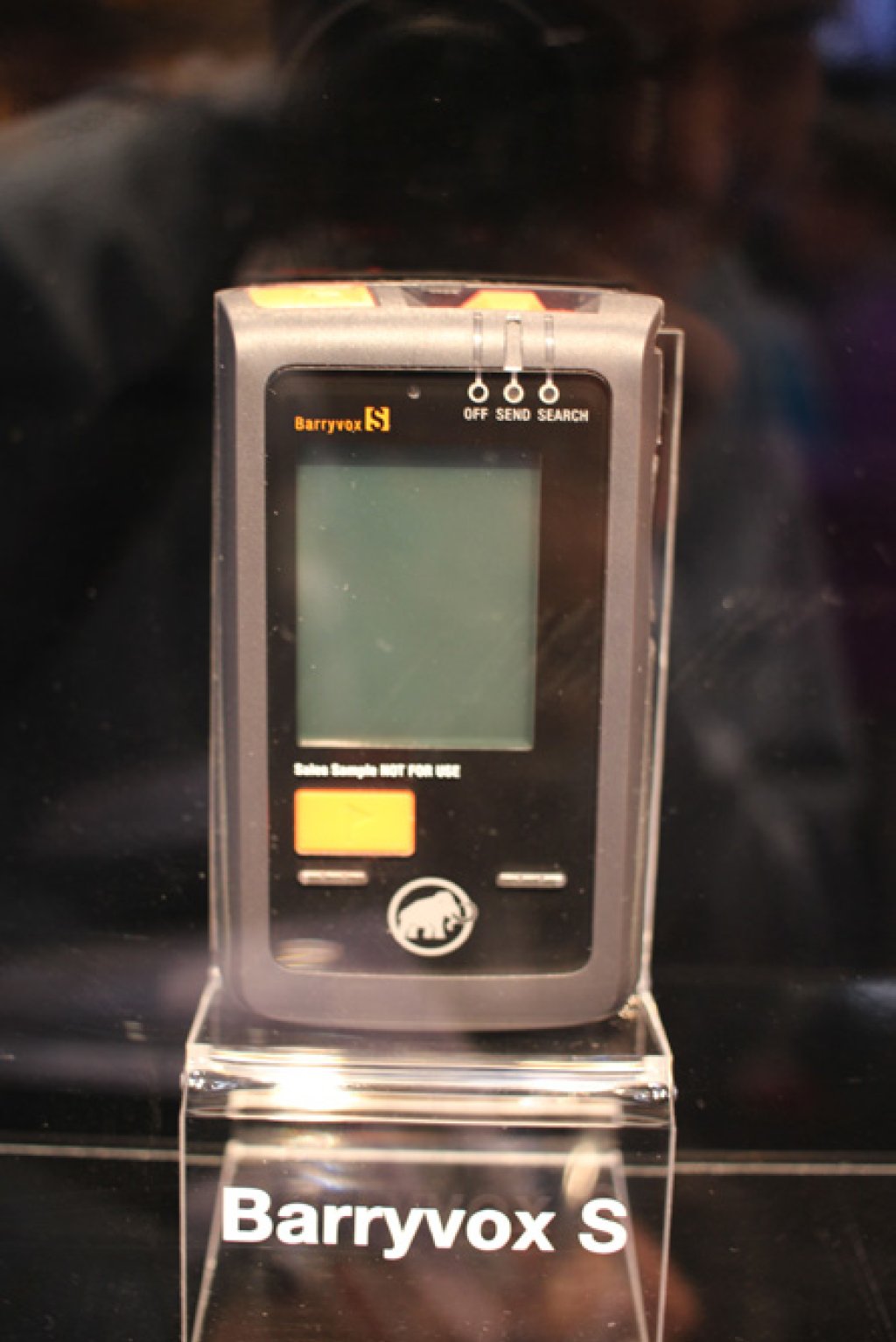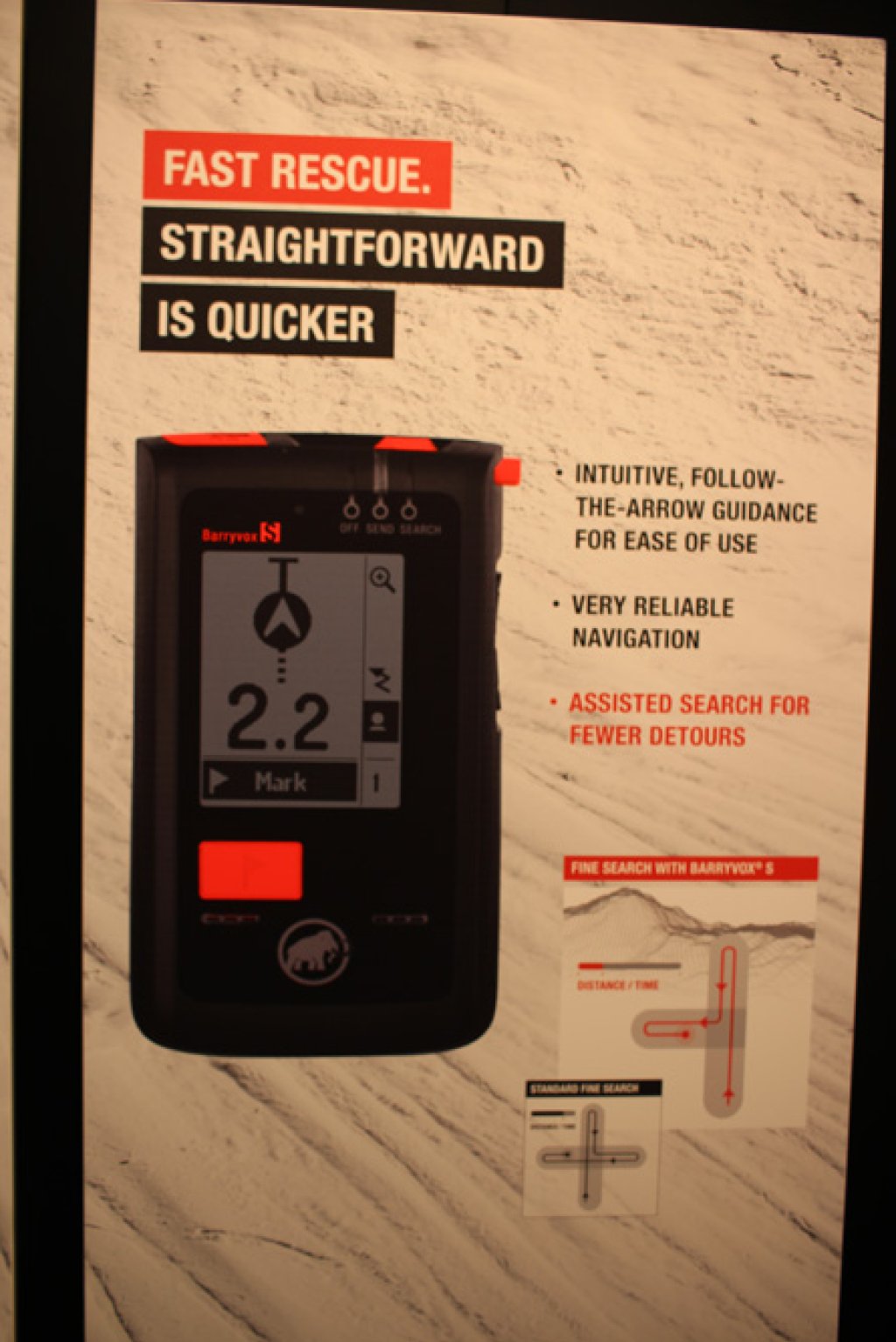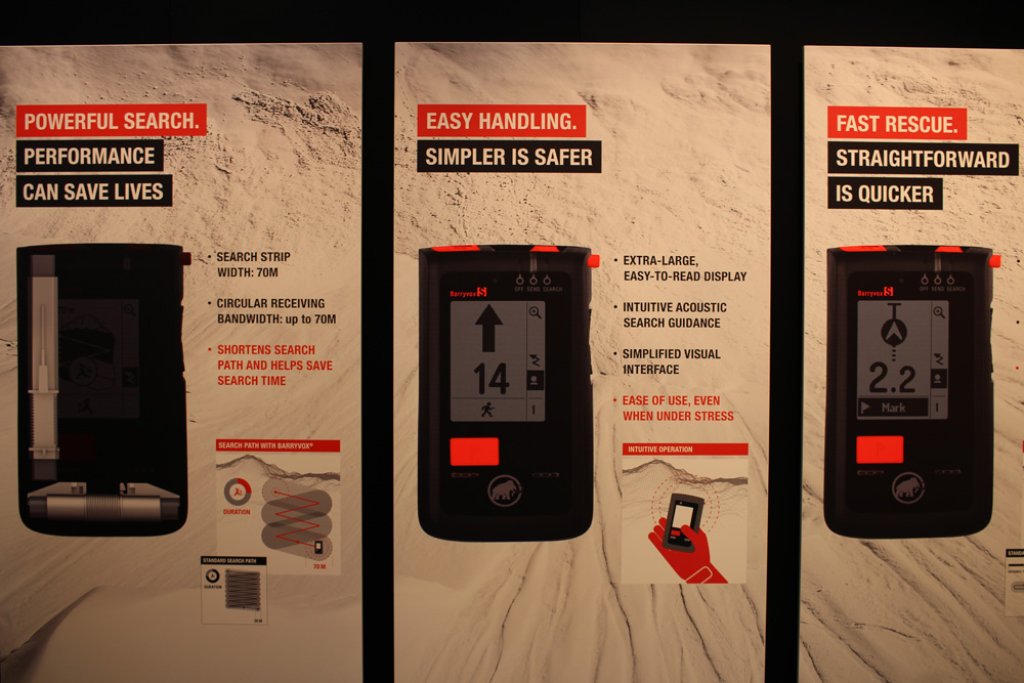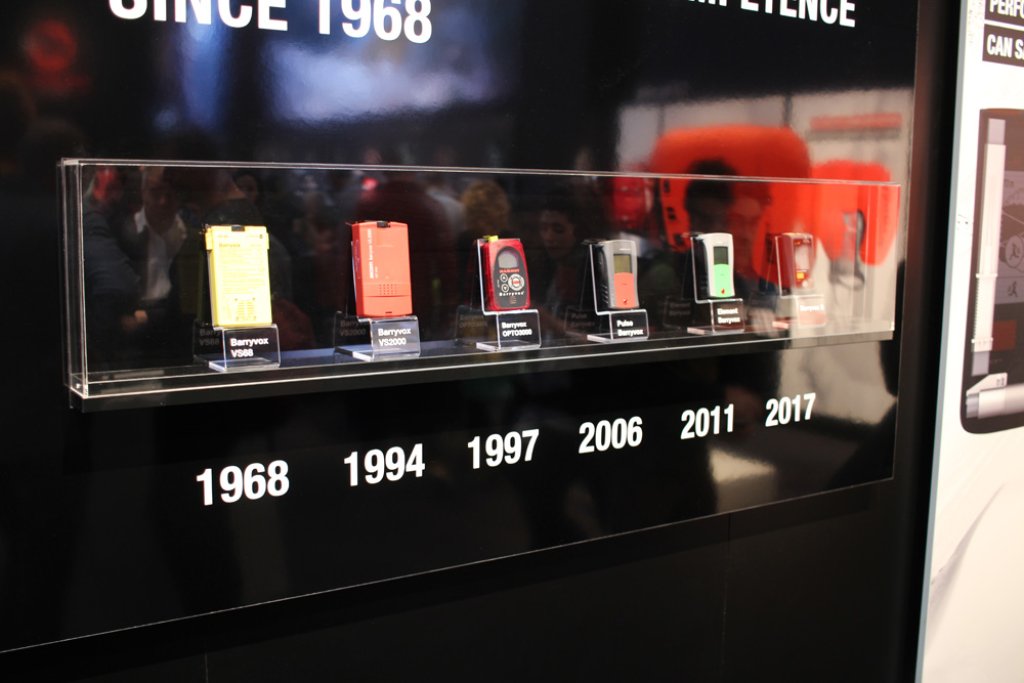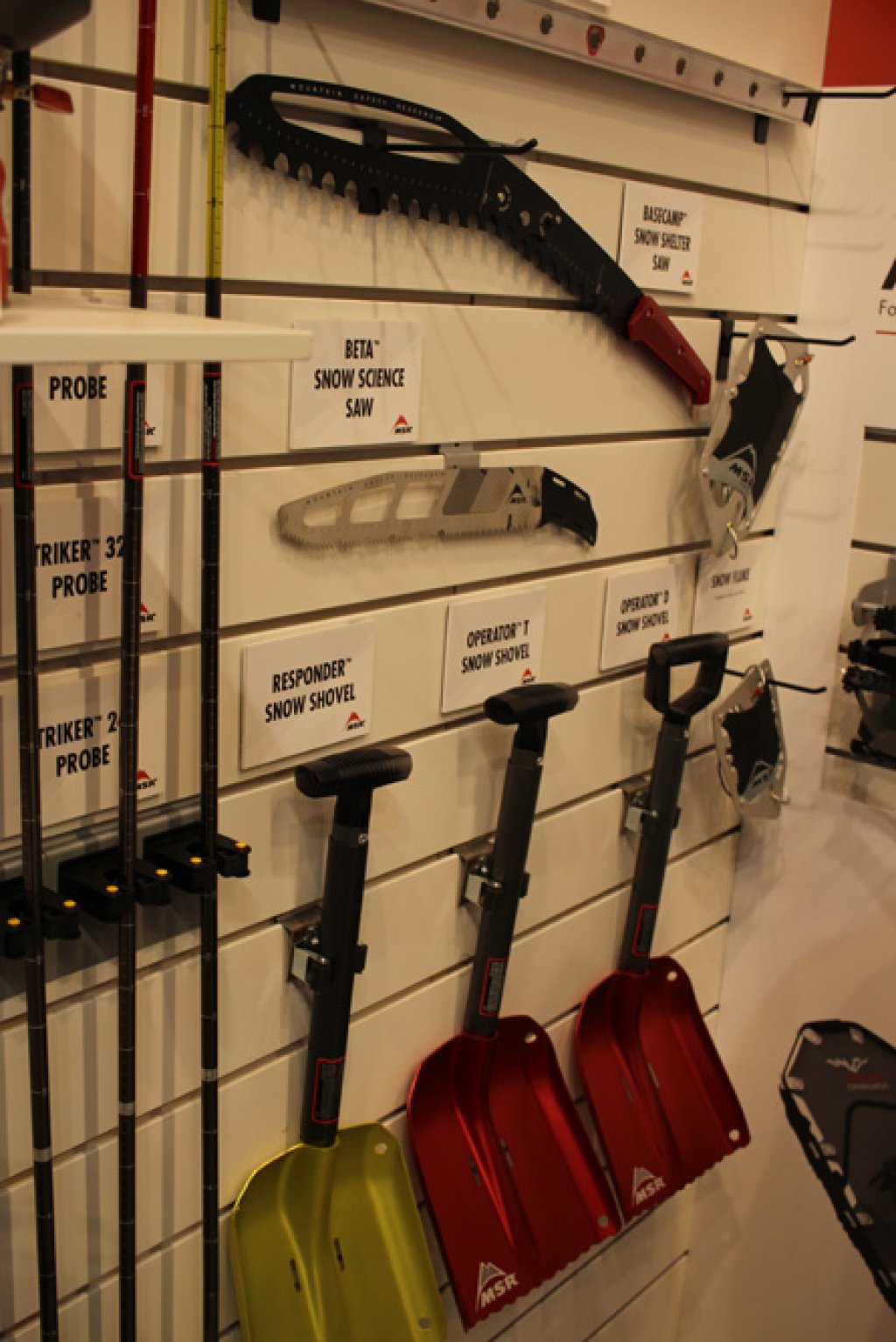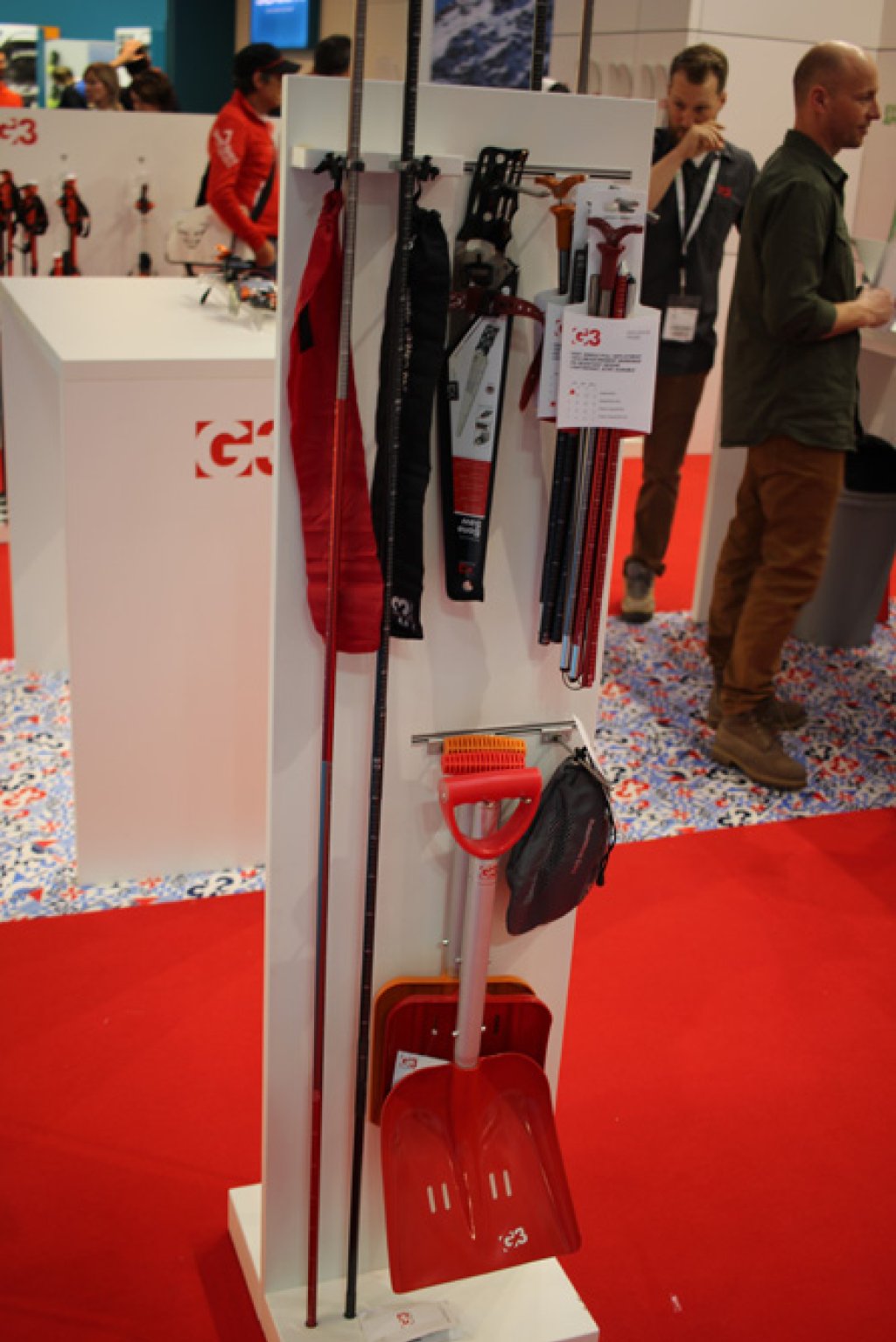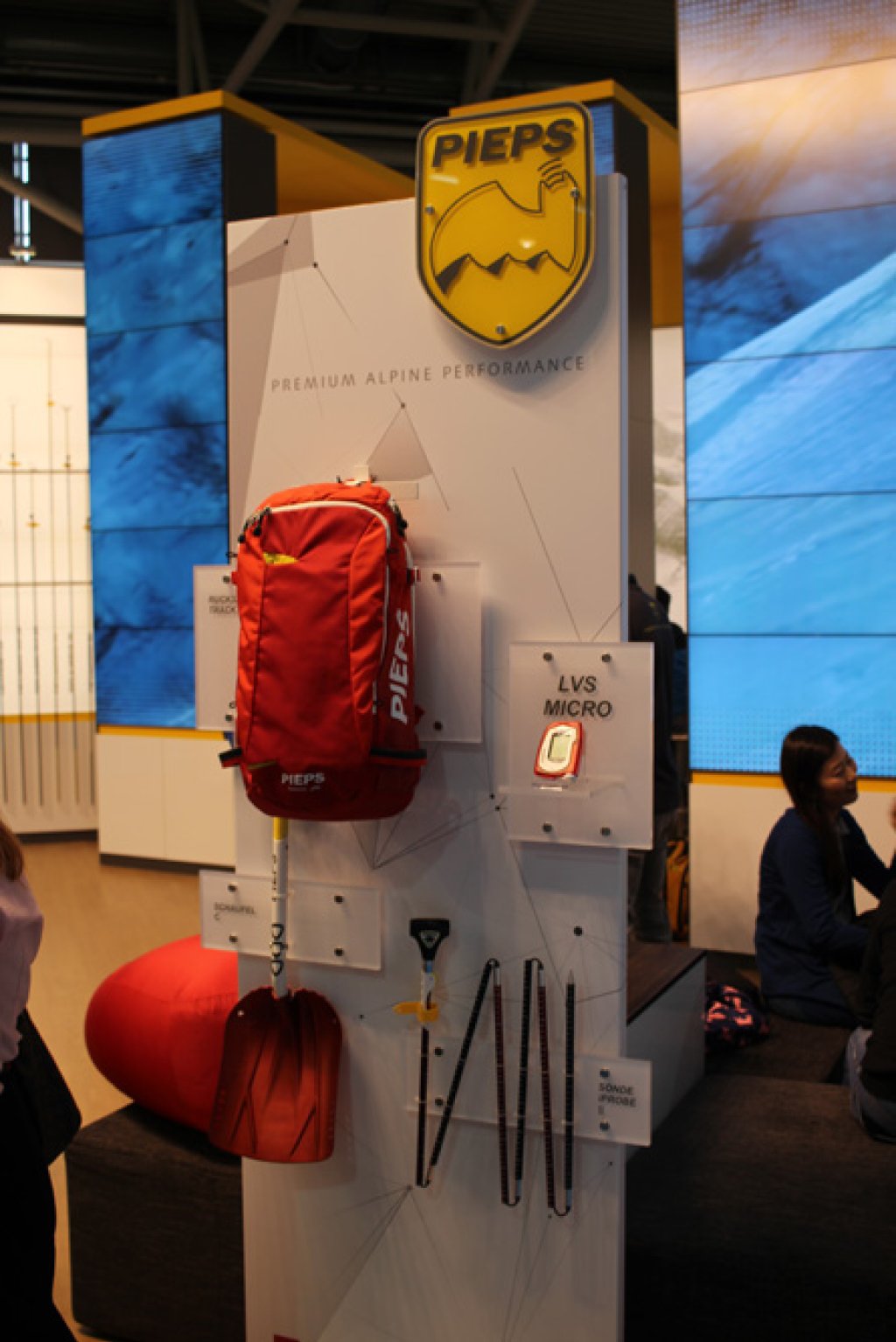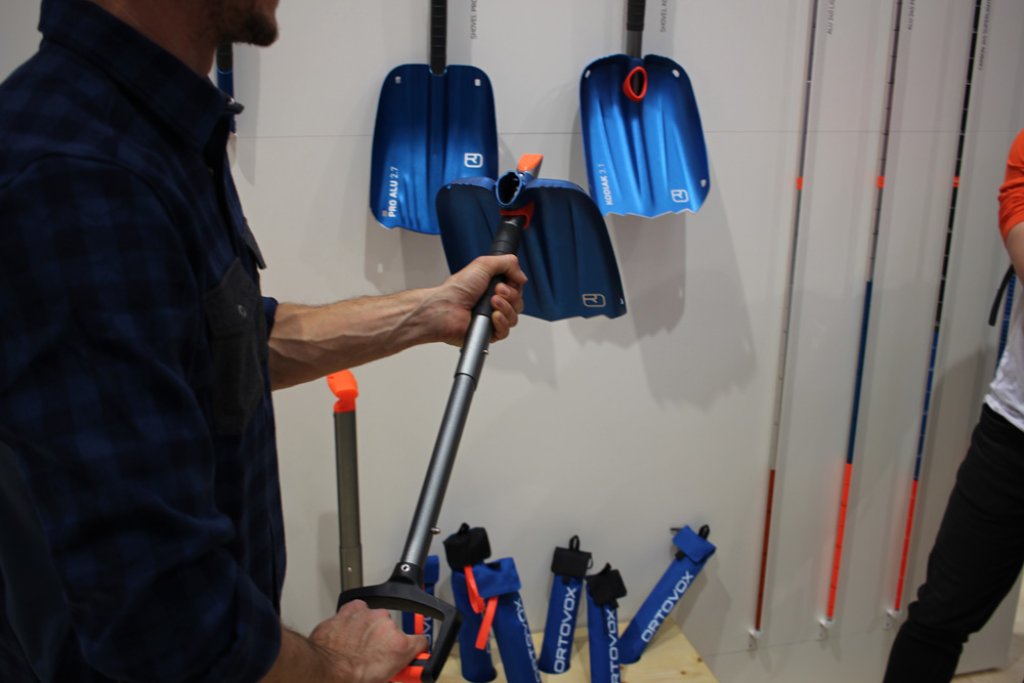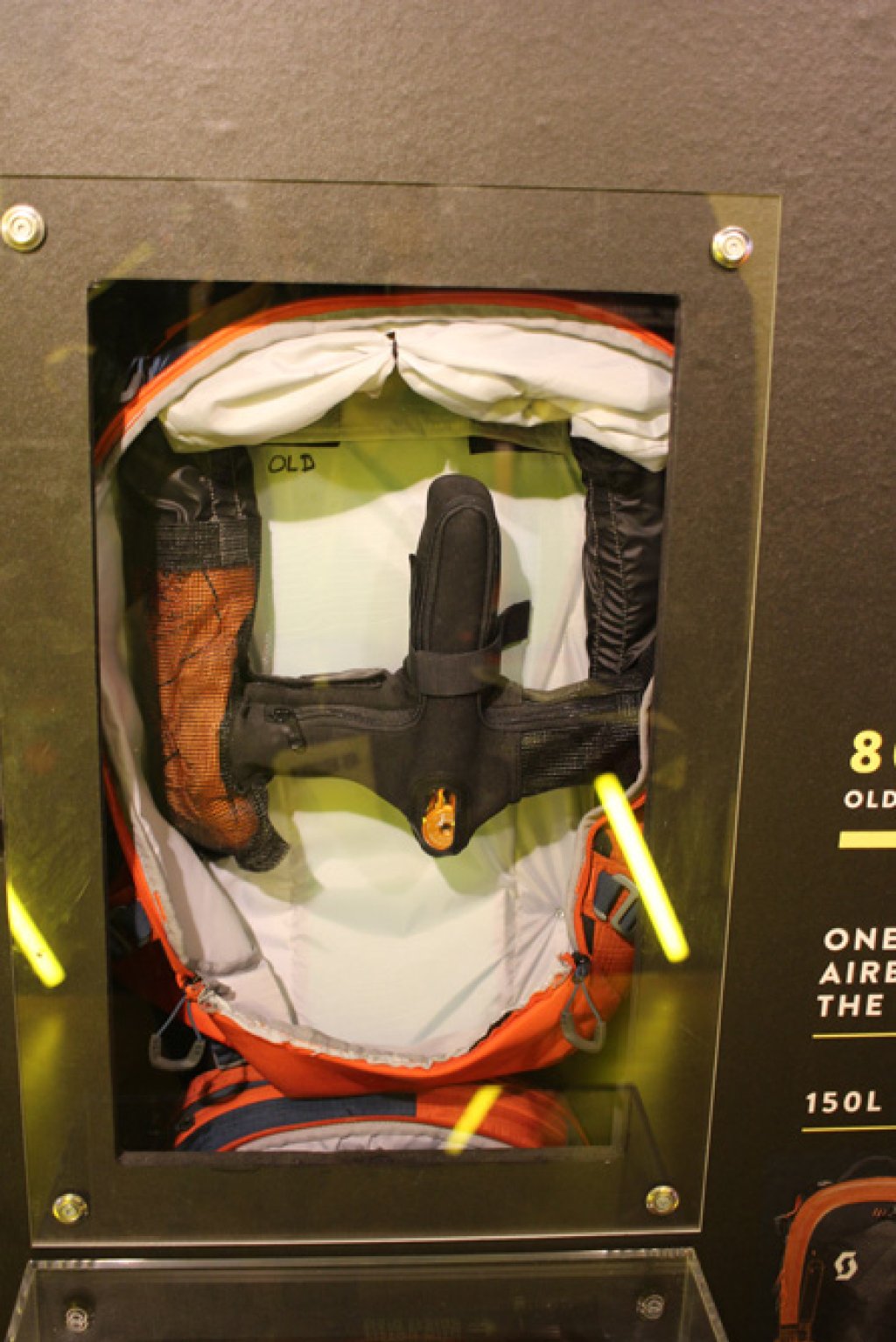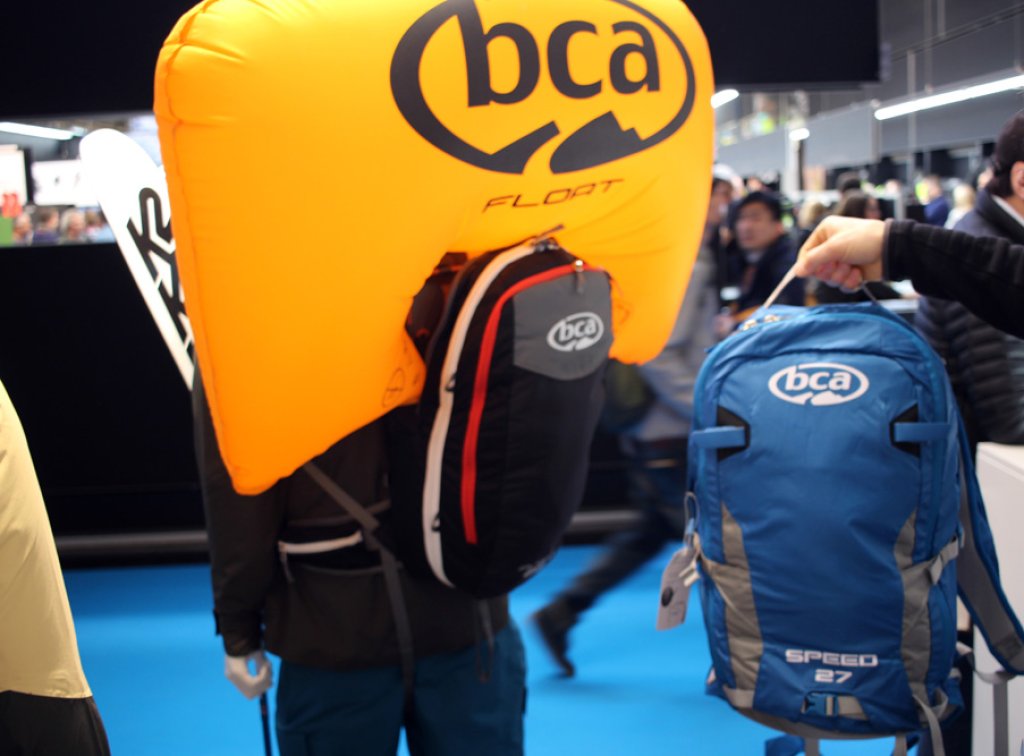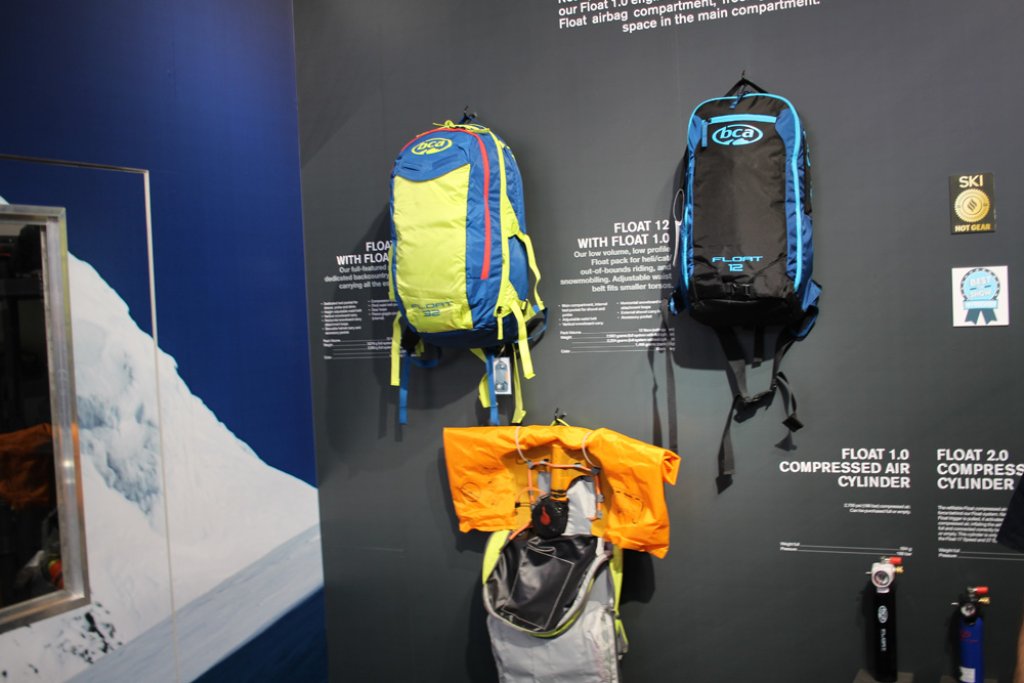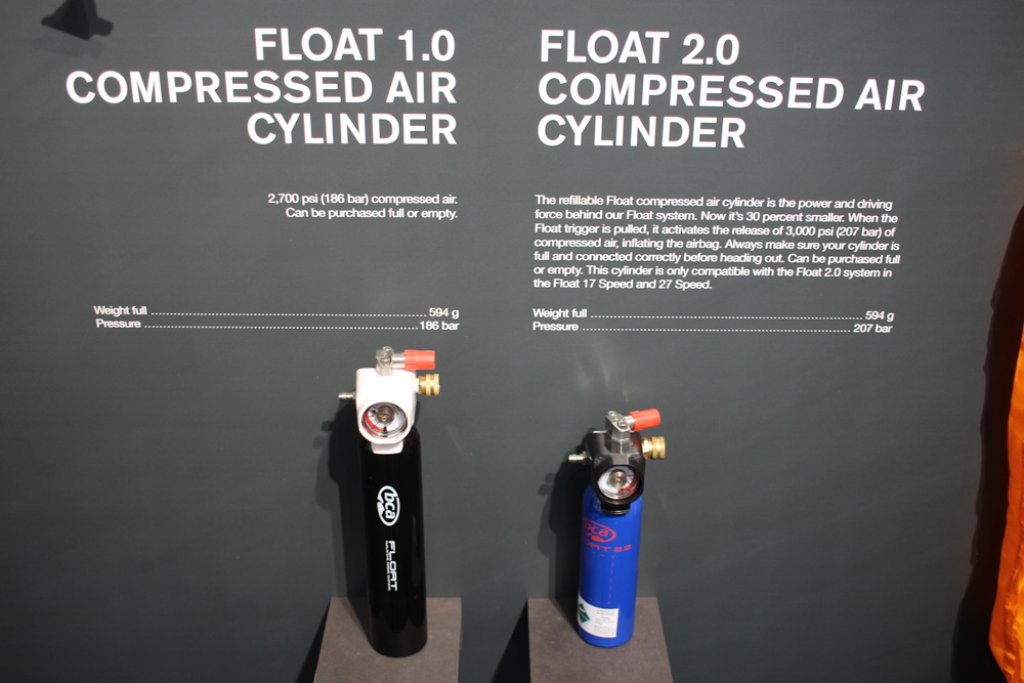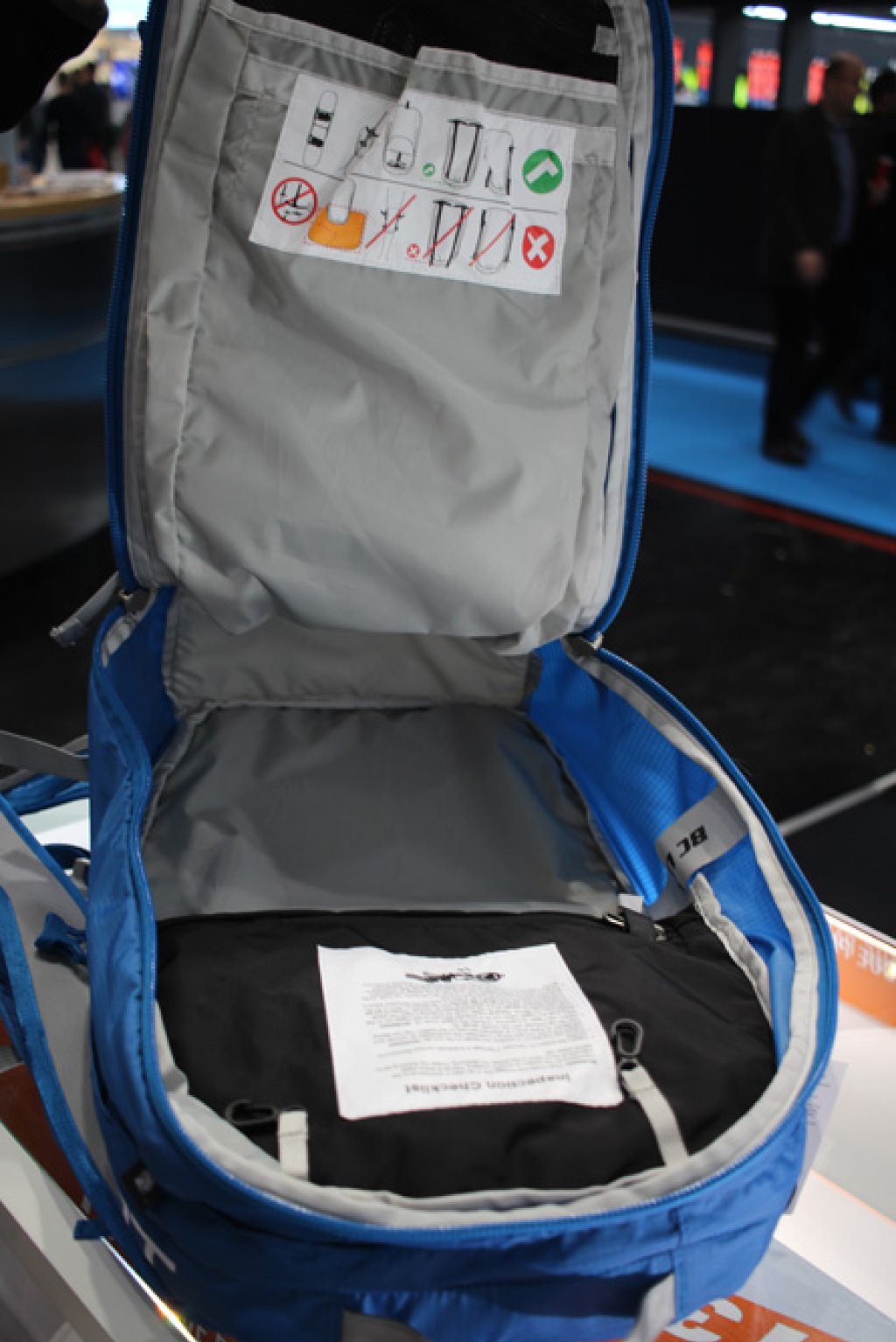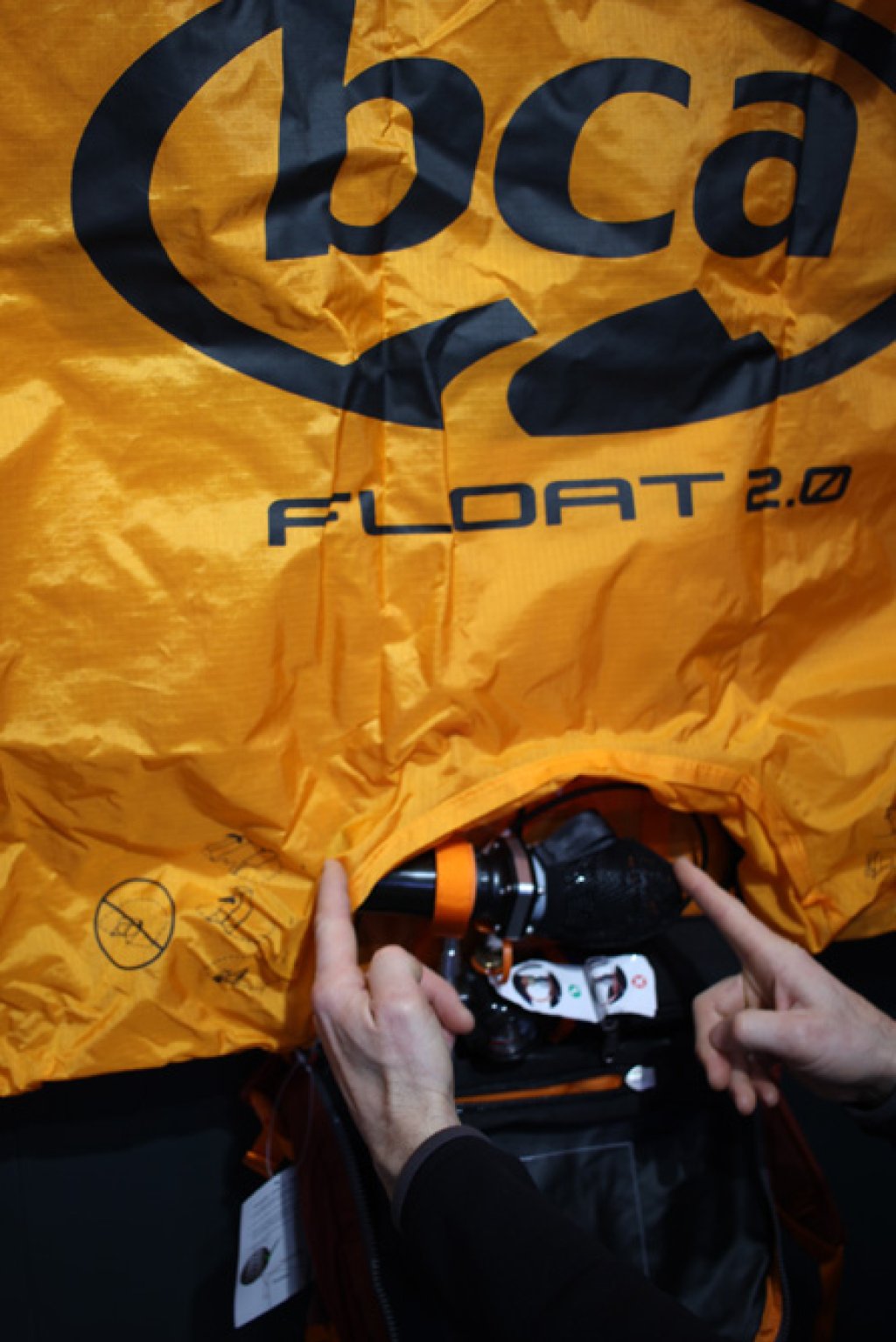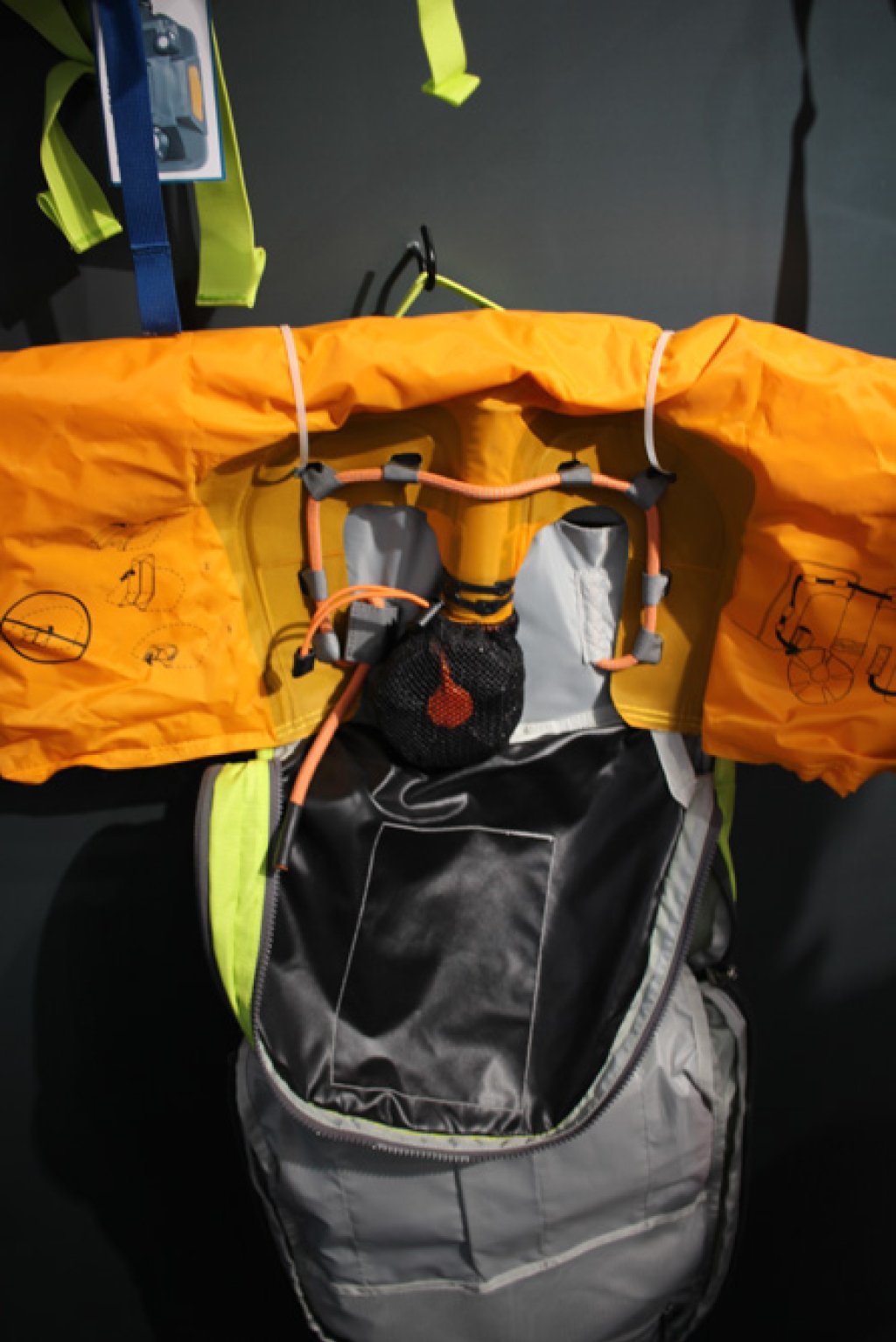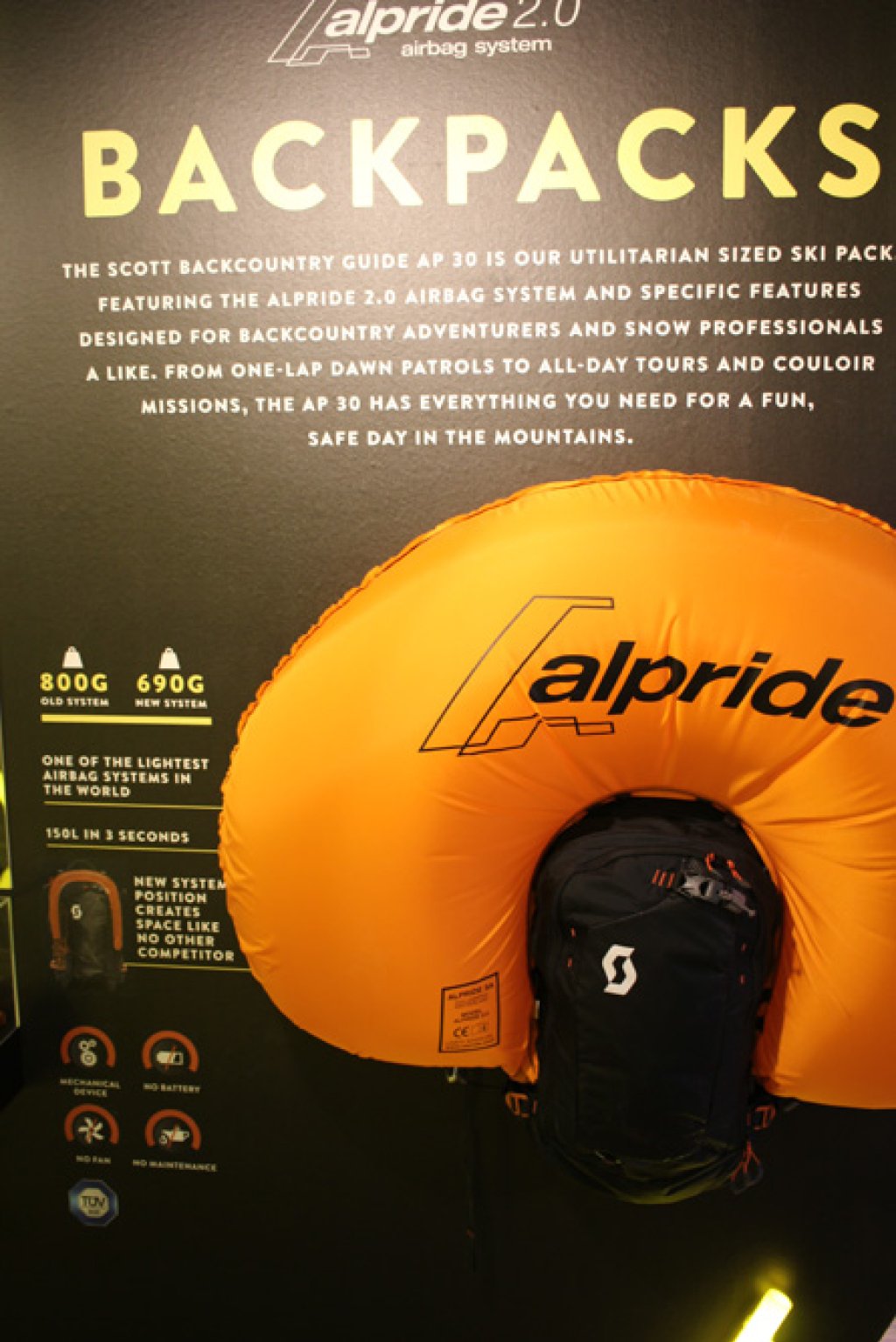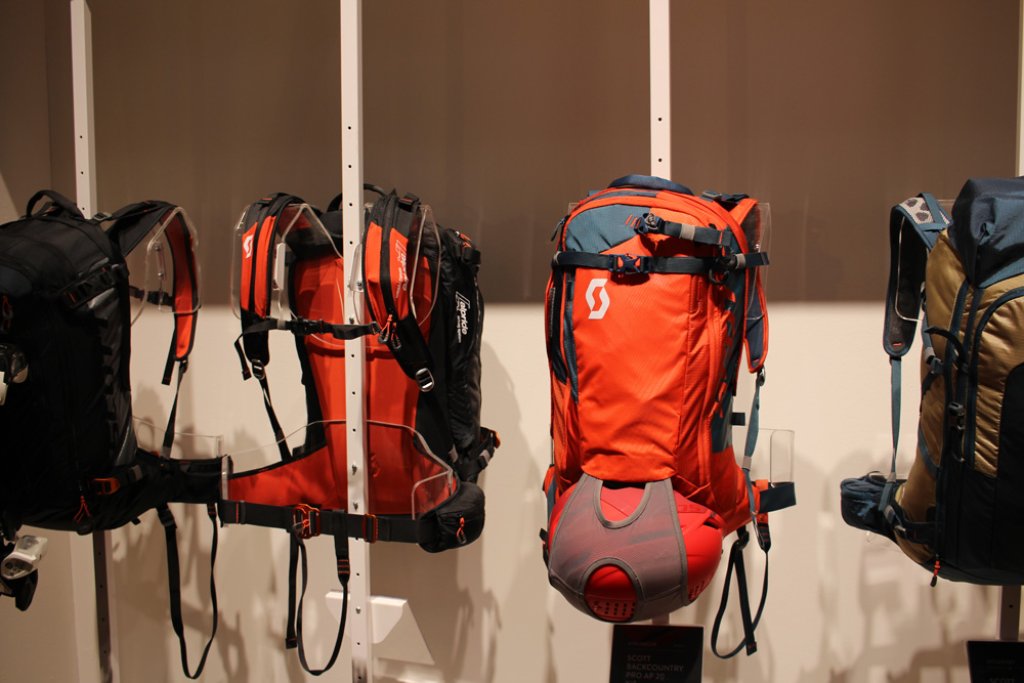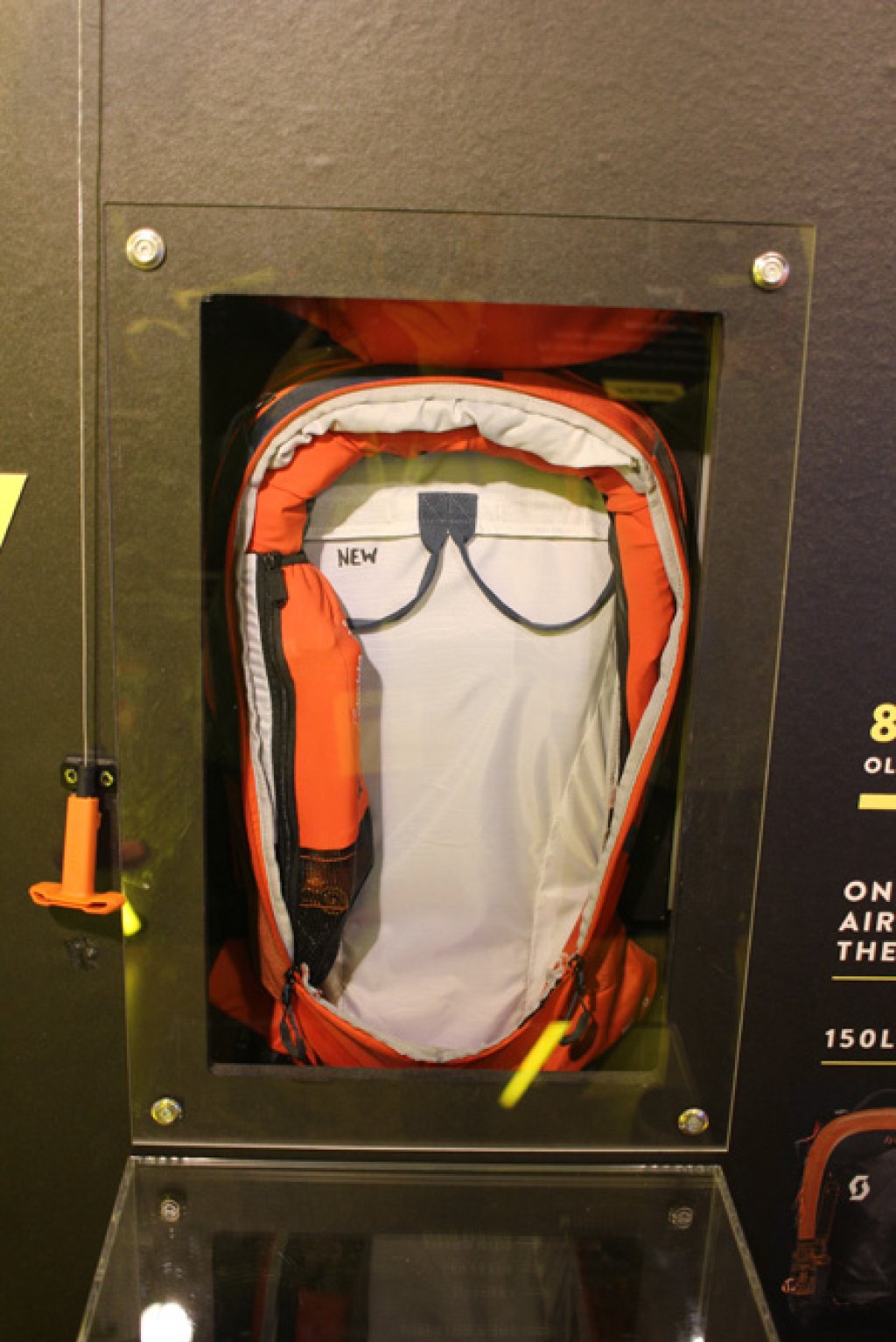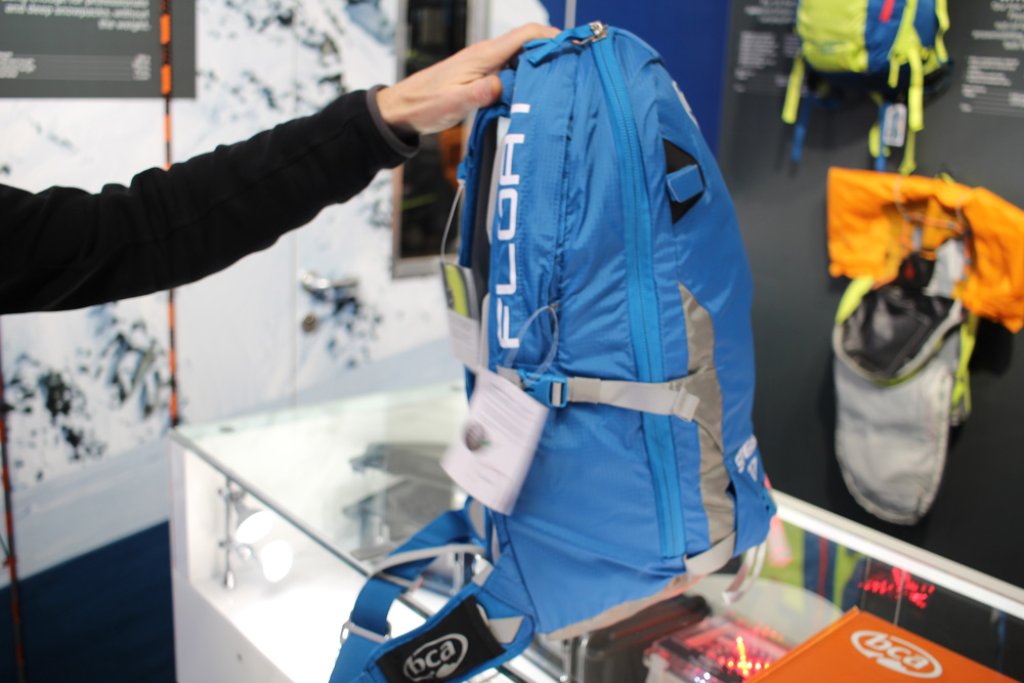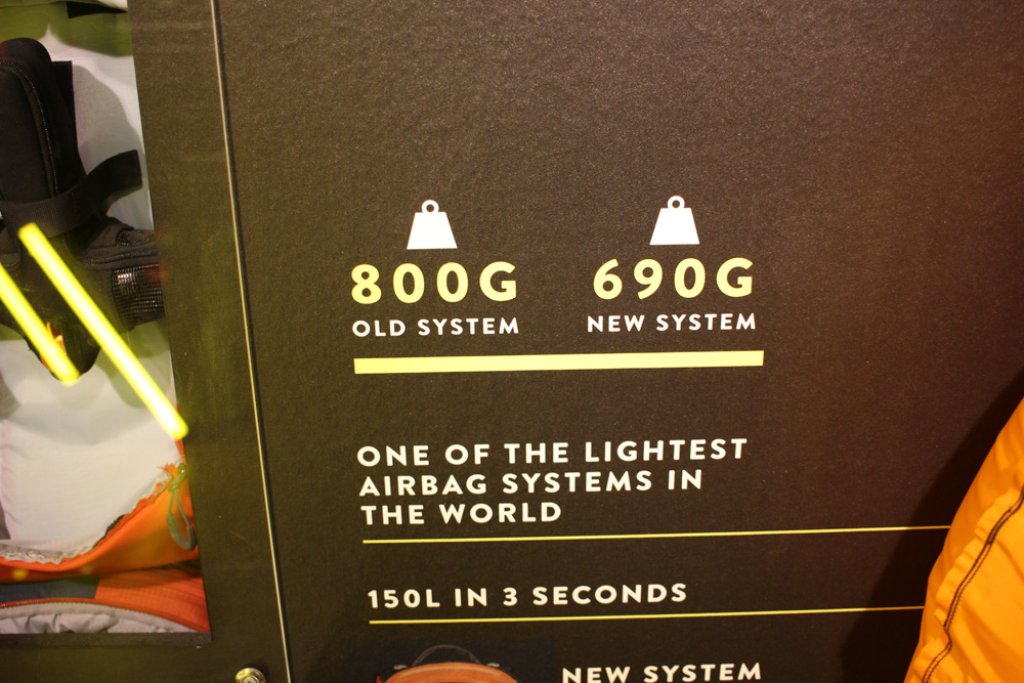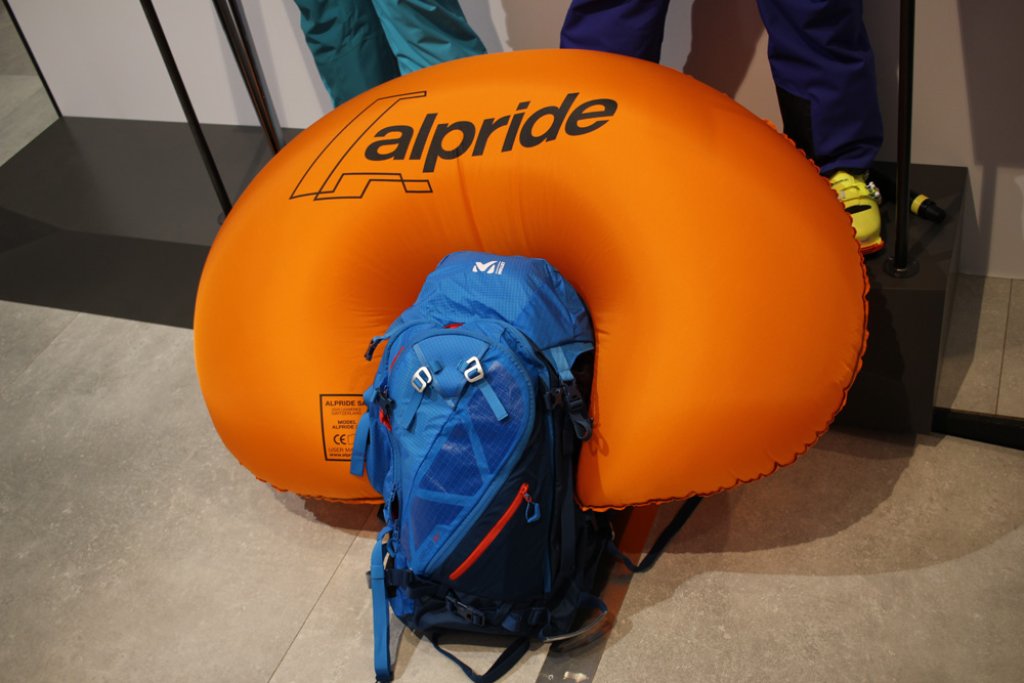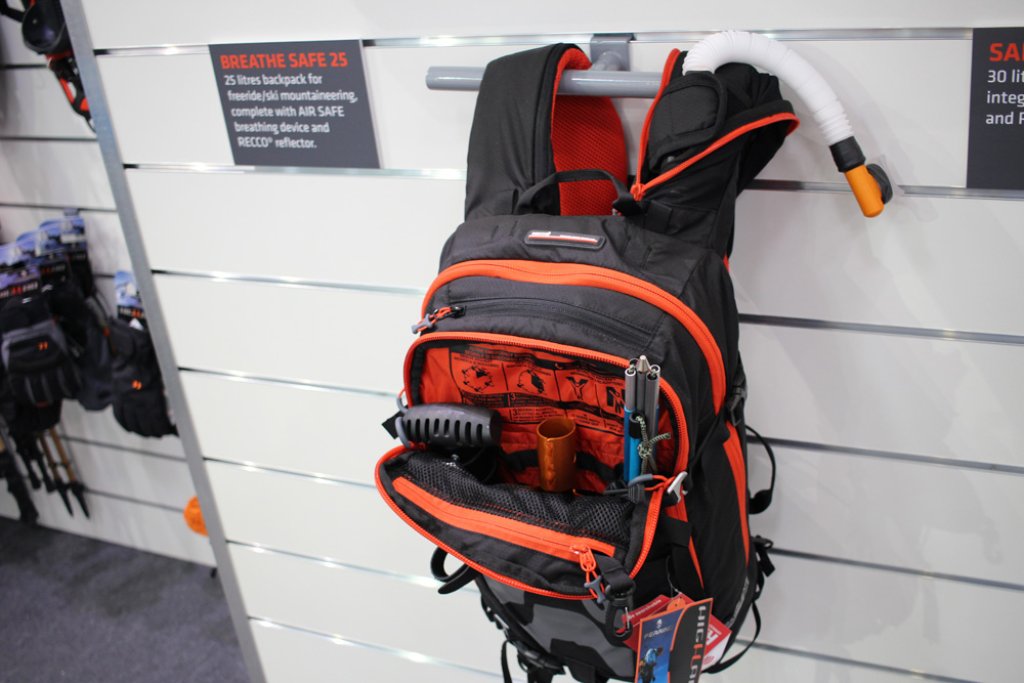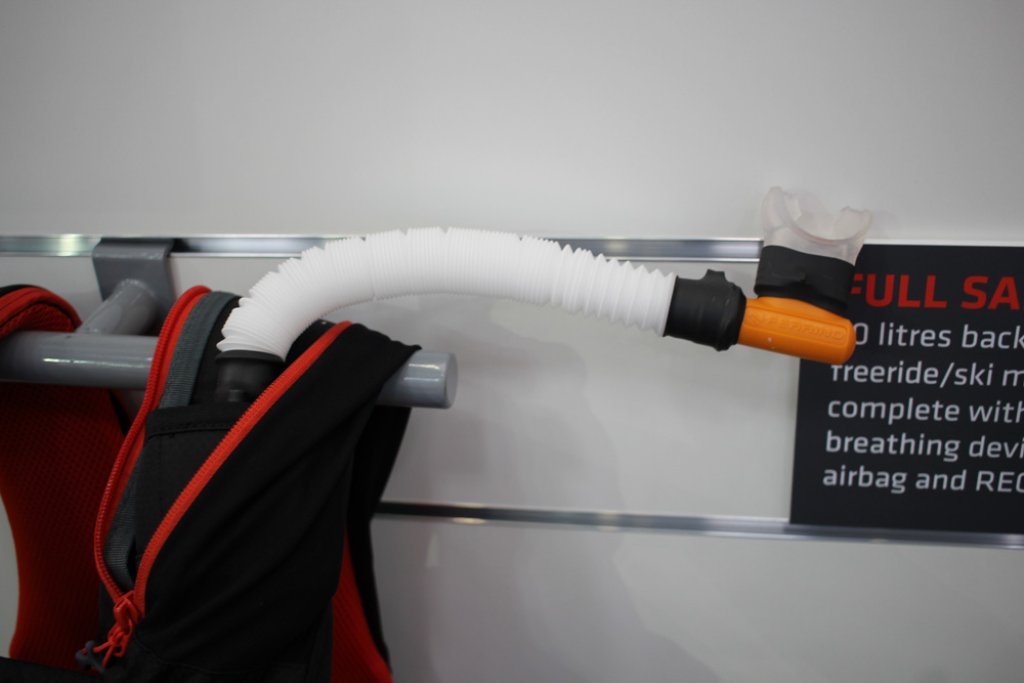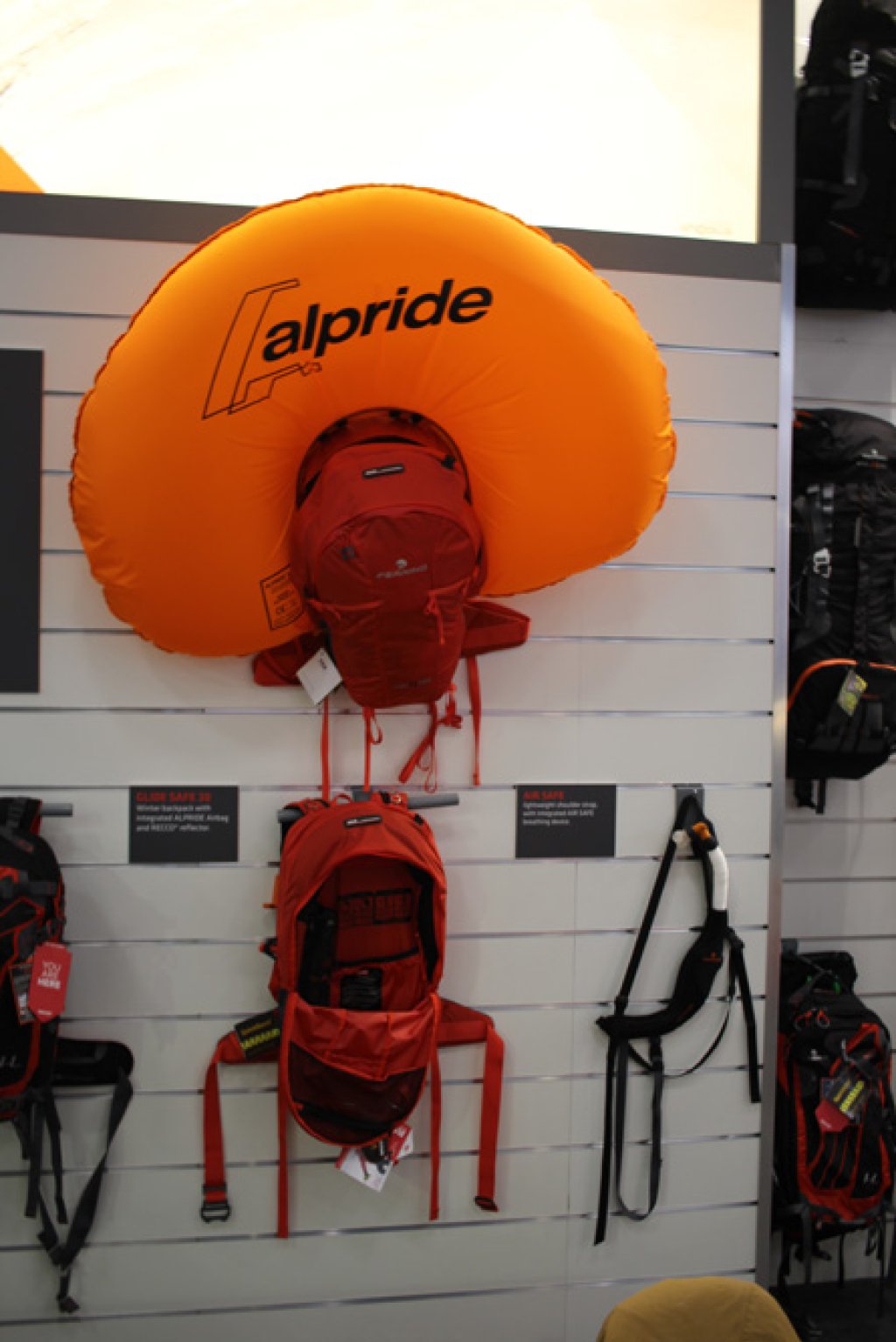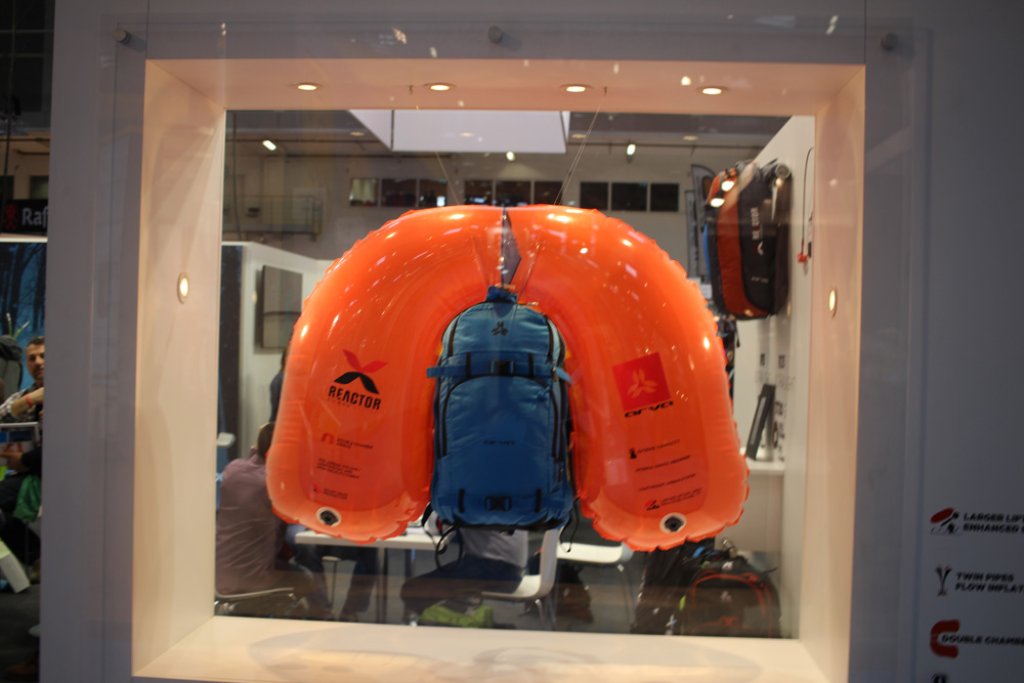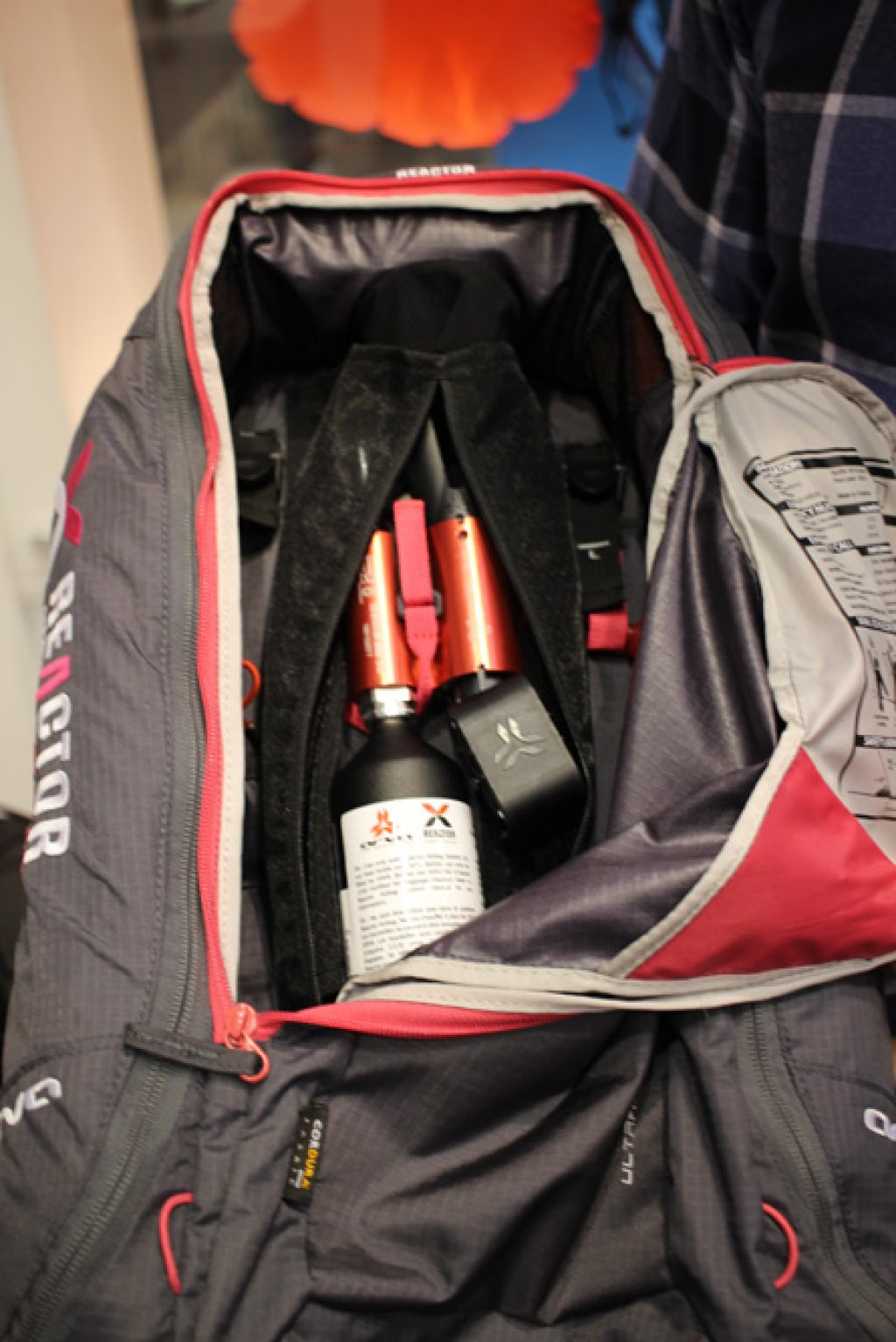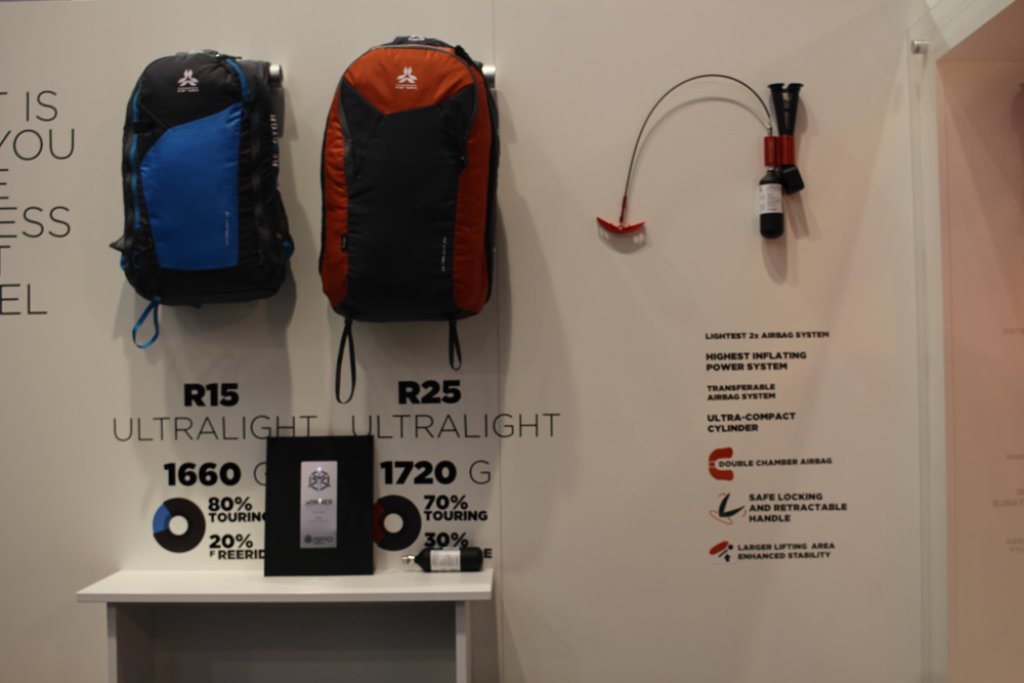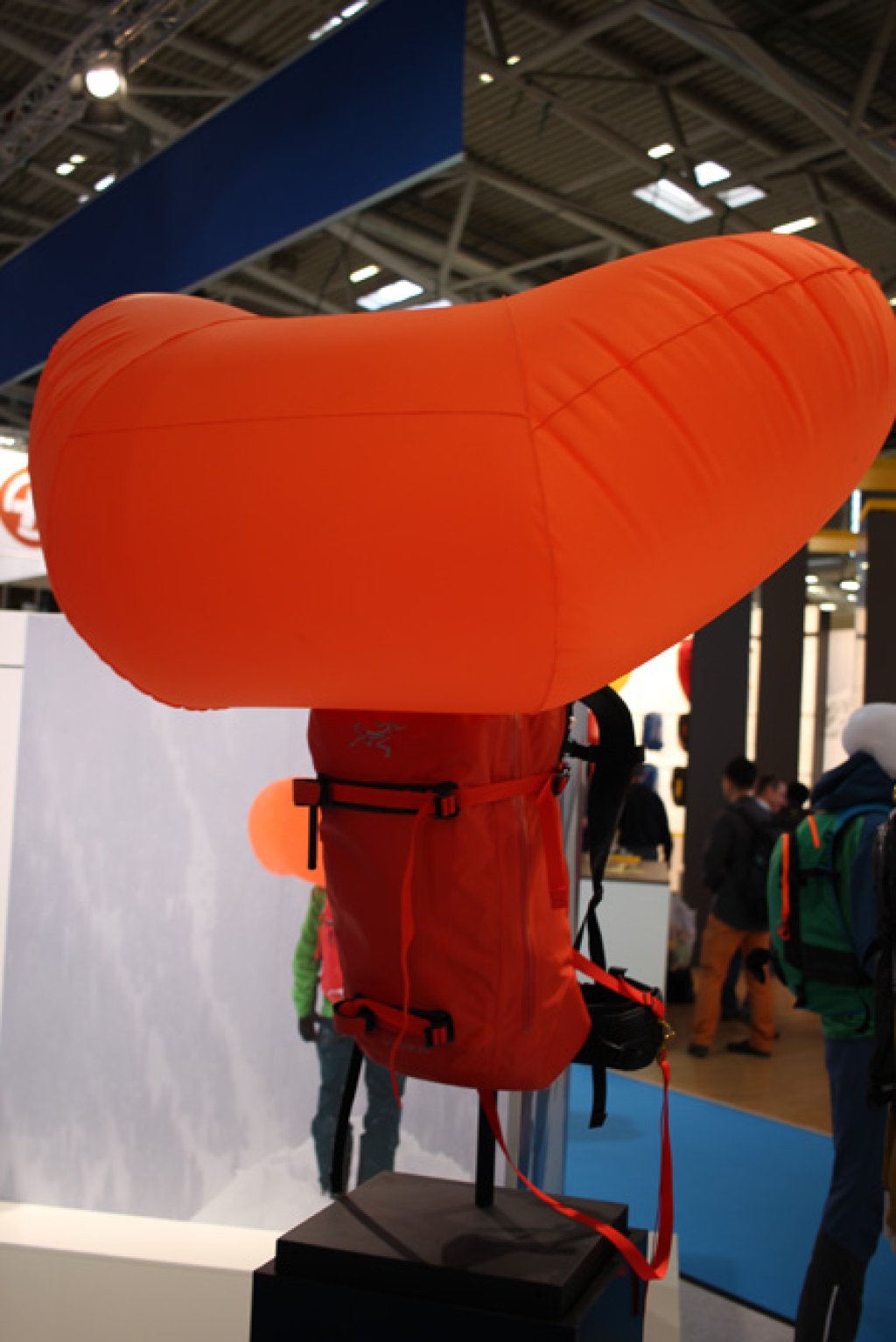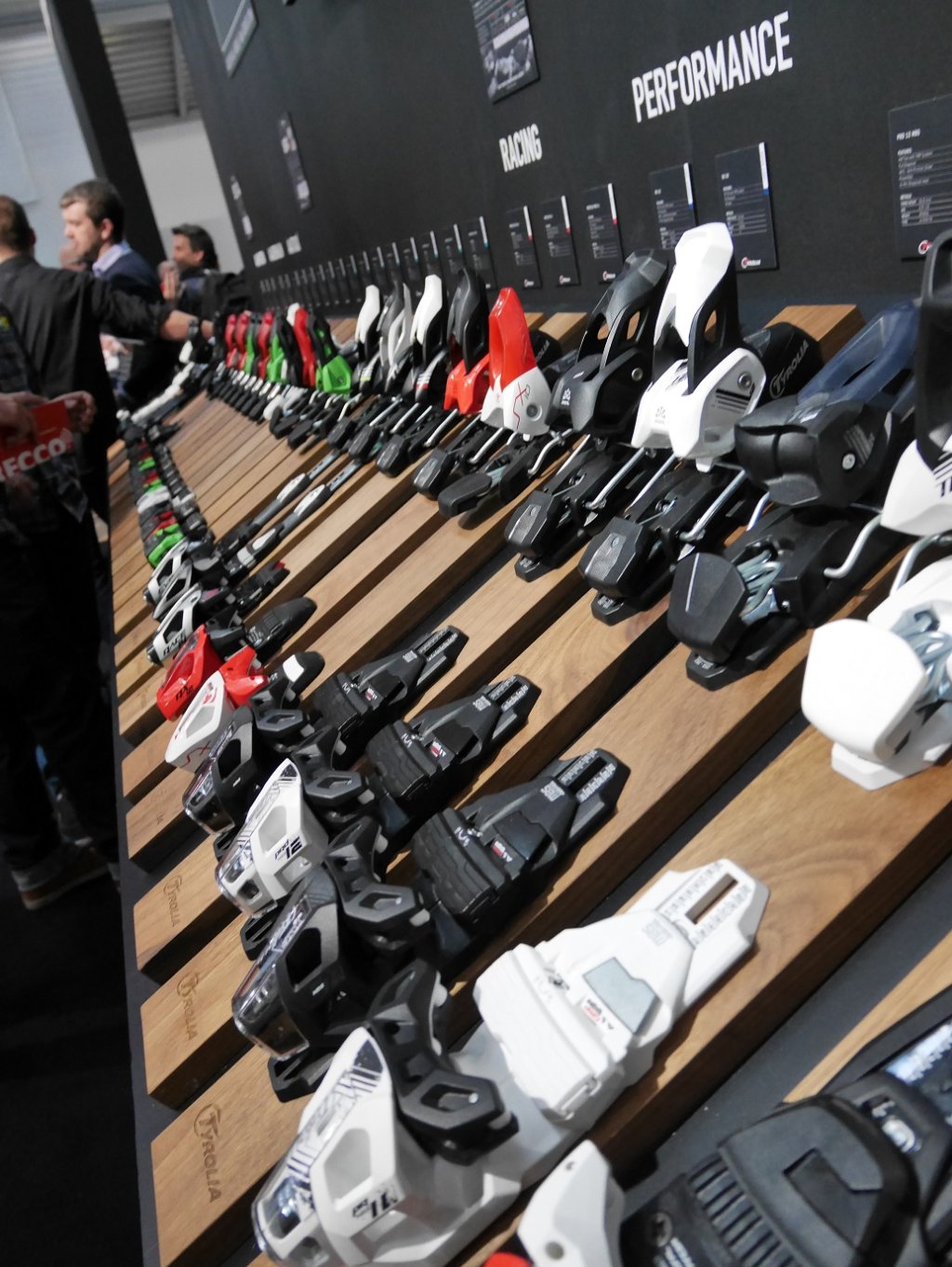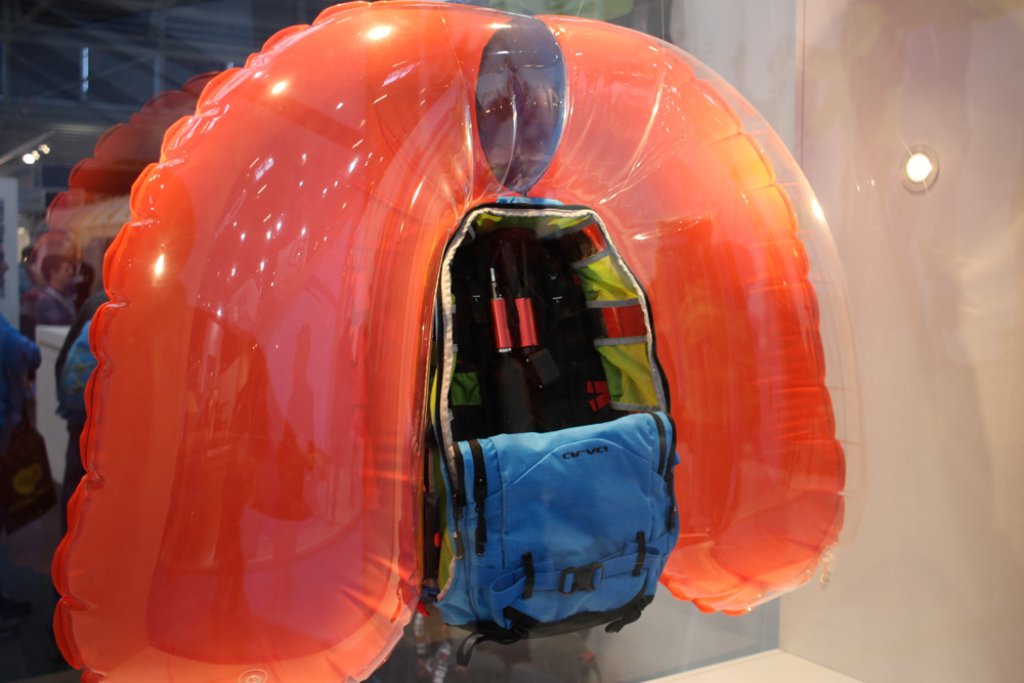Airbags - cartridge systems
Ortovox, Mammut and Arva already presented their new, lighter airbag systems last year. This year, Mammut has added an additional backpack model with the R.A.S. system (Flip, 22l). Arva has also expanded its Reactor range (various models between 15l and 40l) and slightly revised its backpacks (e.g. carrier system).
BCA: Float 2.0
BCA has also revised its tried-and-tested Float system and given it a diet. According to BCA, the new airbag system weighs only 637 grams (without the rest of the backpack) - this puts BCA on a par with other manufacturers who were already competing for the lightest airbag system at ISPO last year and are only presenting small changes this year. The Float 2.0 Speed 27 backpack weighs around 2.5 kilos complete. As before, the cartridges are filled with normal breathing air.
The weight saving in the Float 2.0 system was achieved primarily through a more efficient blower, which makes it possible to use a smaller cartridge with the same performance. The Float 2.0 system fits completely, i.e. including the cartridge, in the separate airbag compartment. The remaining storage space in the backpack remains free, which means you no longer have to pack around the cartridge and the volume is more usable. The Float 2.0 Speed 27 is a rather minimalist backpack - the other features have also been slimmed down compared to the Float 1.0 backpacks that are still available. Like the previous version, the Float 2.0 system can be completely removed if you want to save a little more weight.
Alpride: Alpride is an airbag system that is used by various backpack manufacturers without backpacks being offered under their own label. The Alpride system has also been revised and is now smaller, lighter and more compact in the backpack in version 2.0. At 690 grams, the weight of the airbag system is in the same league as that of other manufacturers. Scott has a 20l and a 30l backpack with the Alpride 2.0 system. Millet also uses Alpride, as does Ferrino and the new company Integrated Avalanche System (see below).
